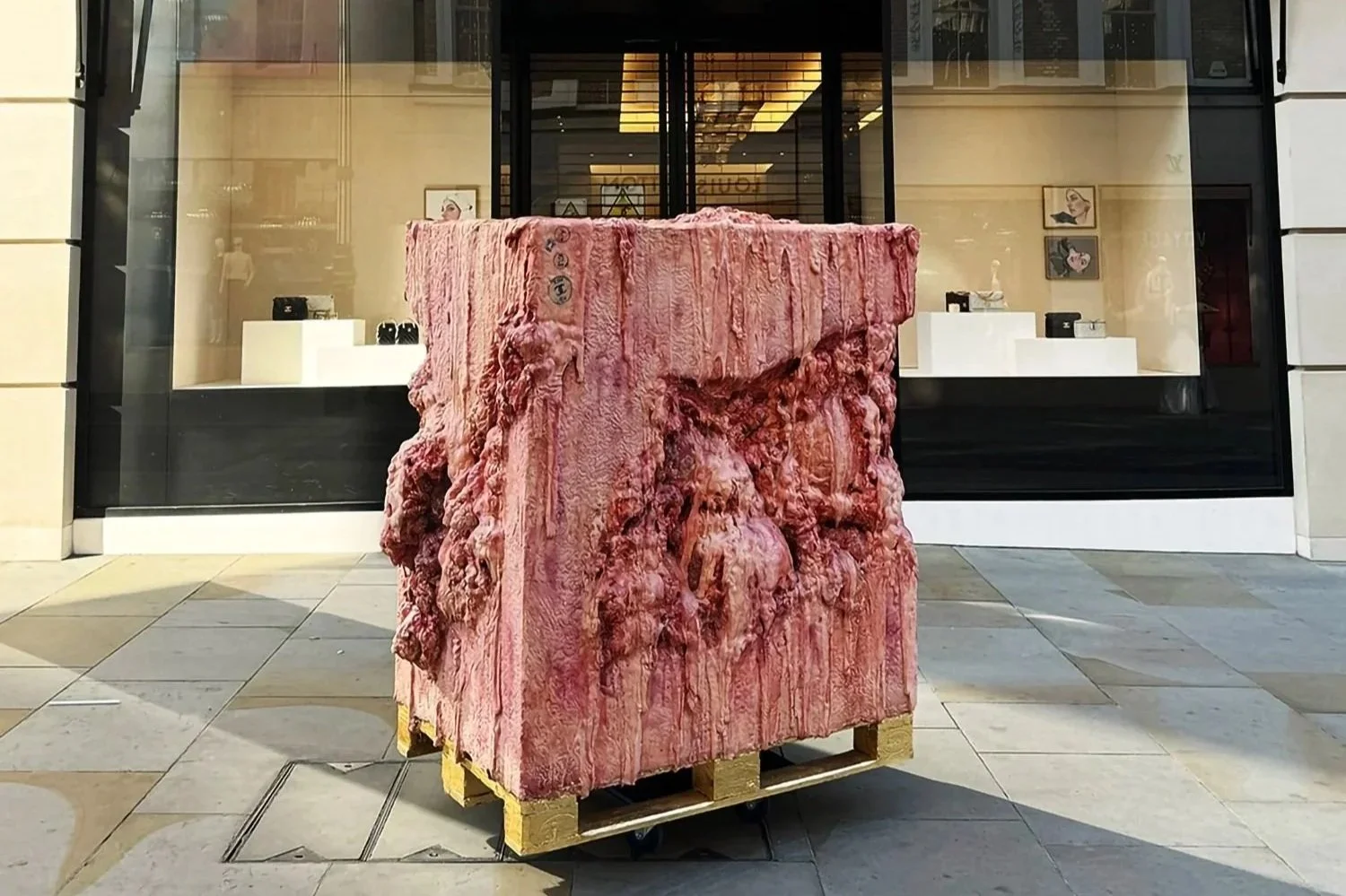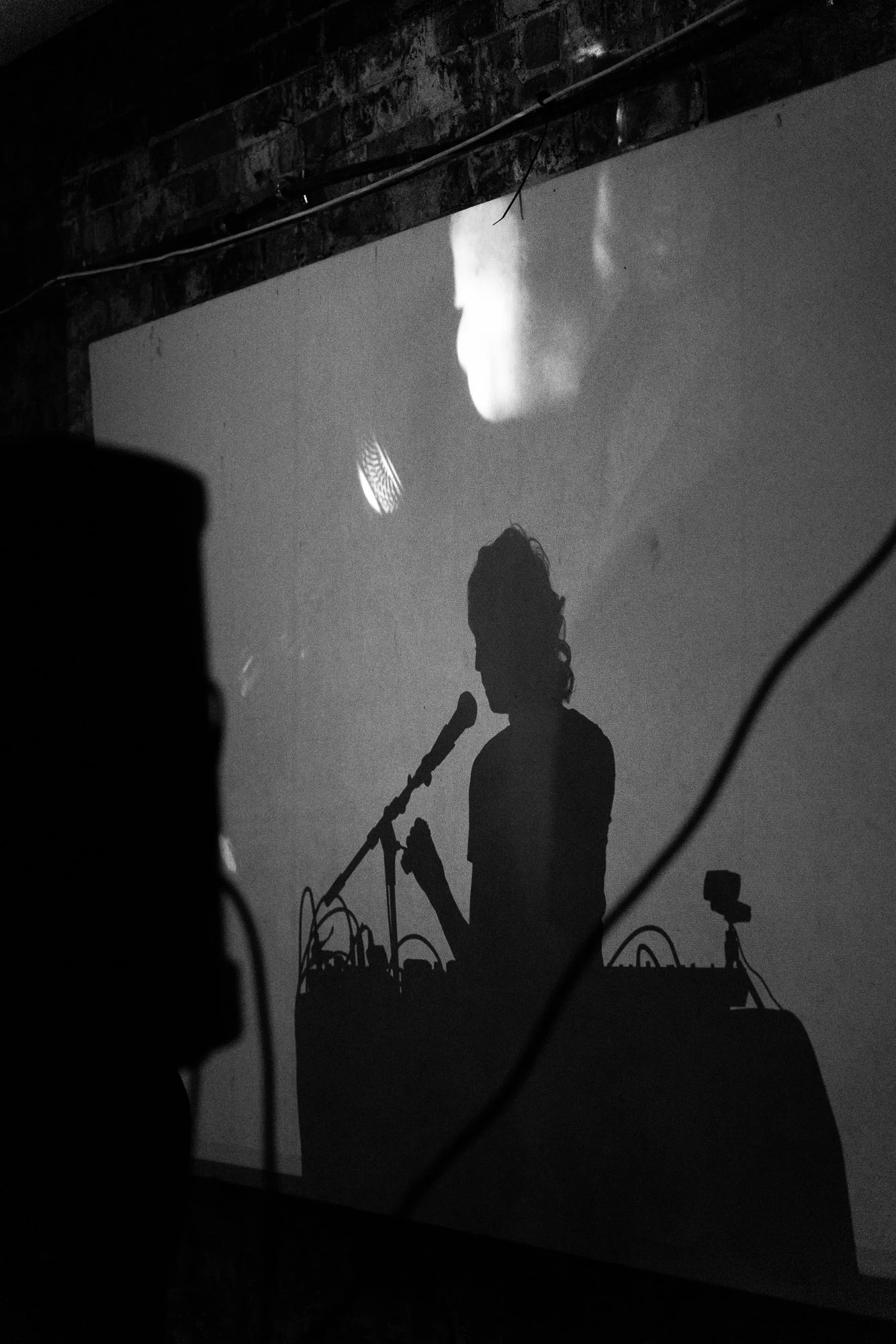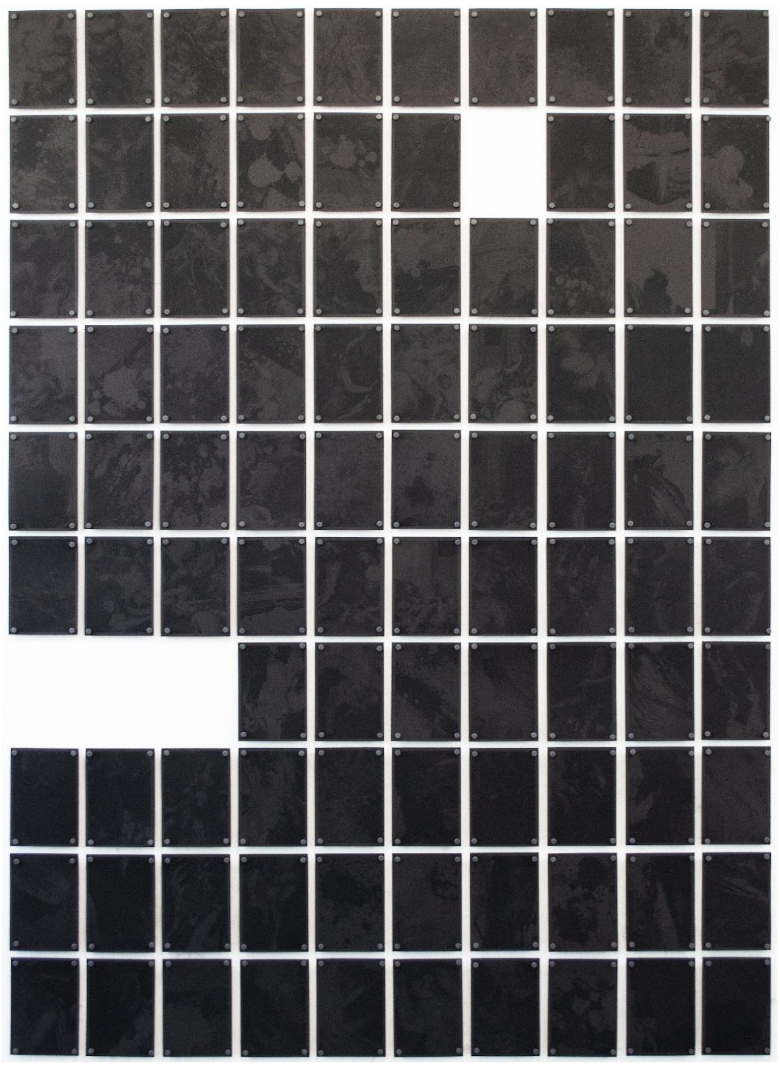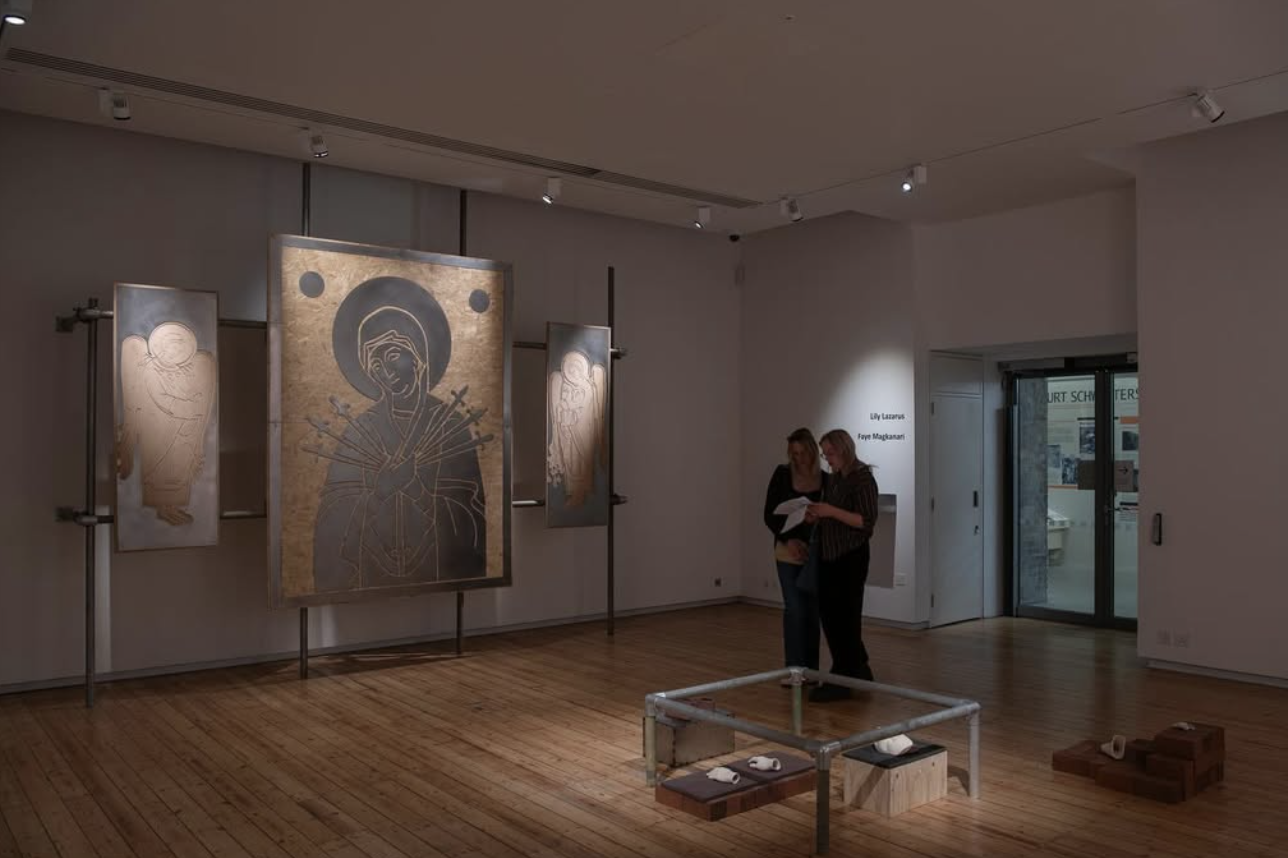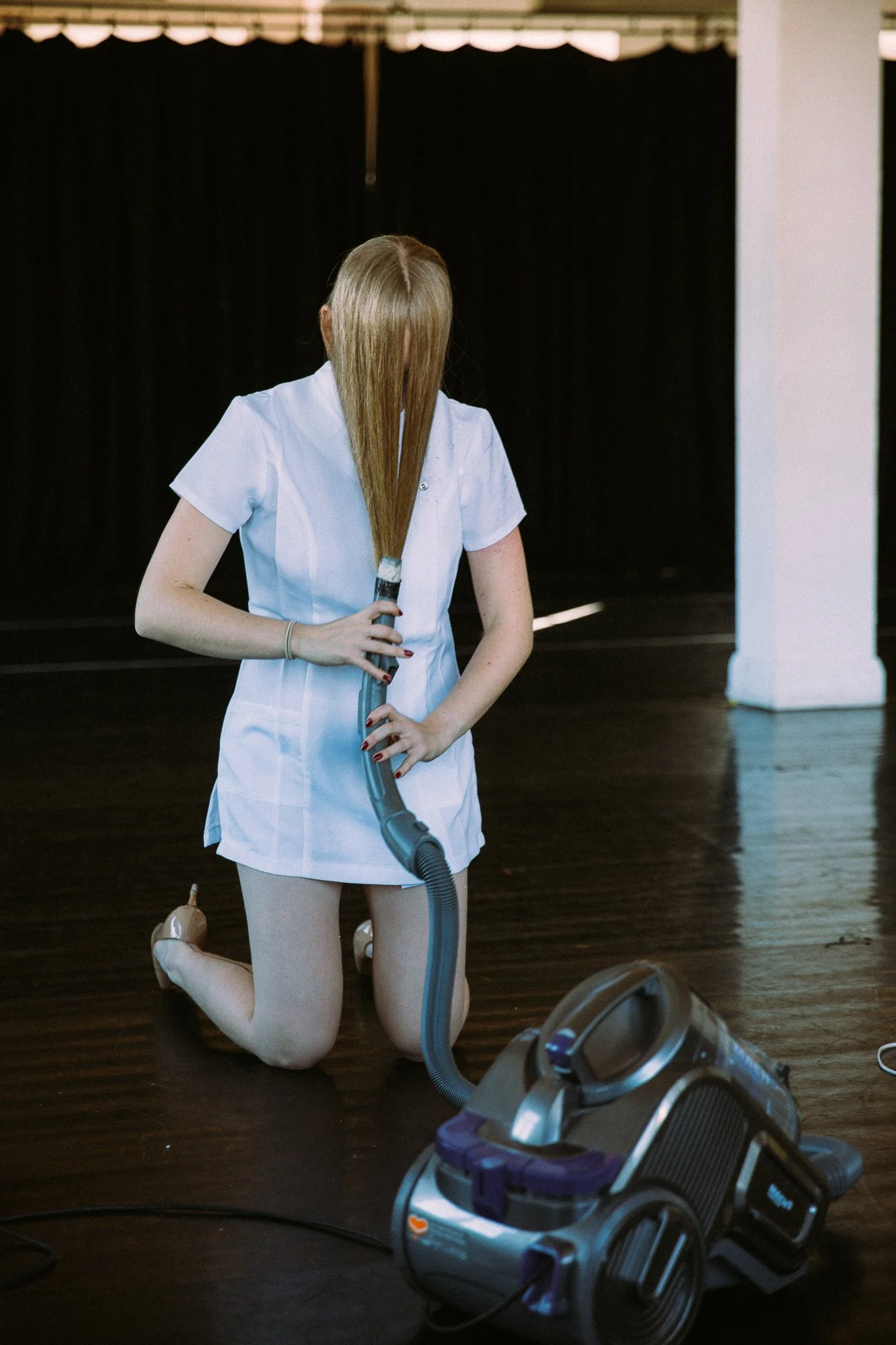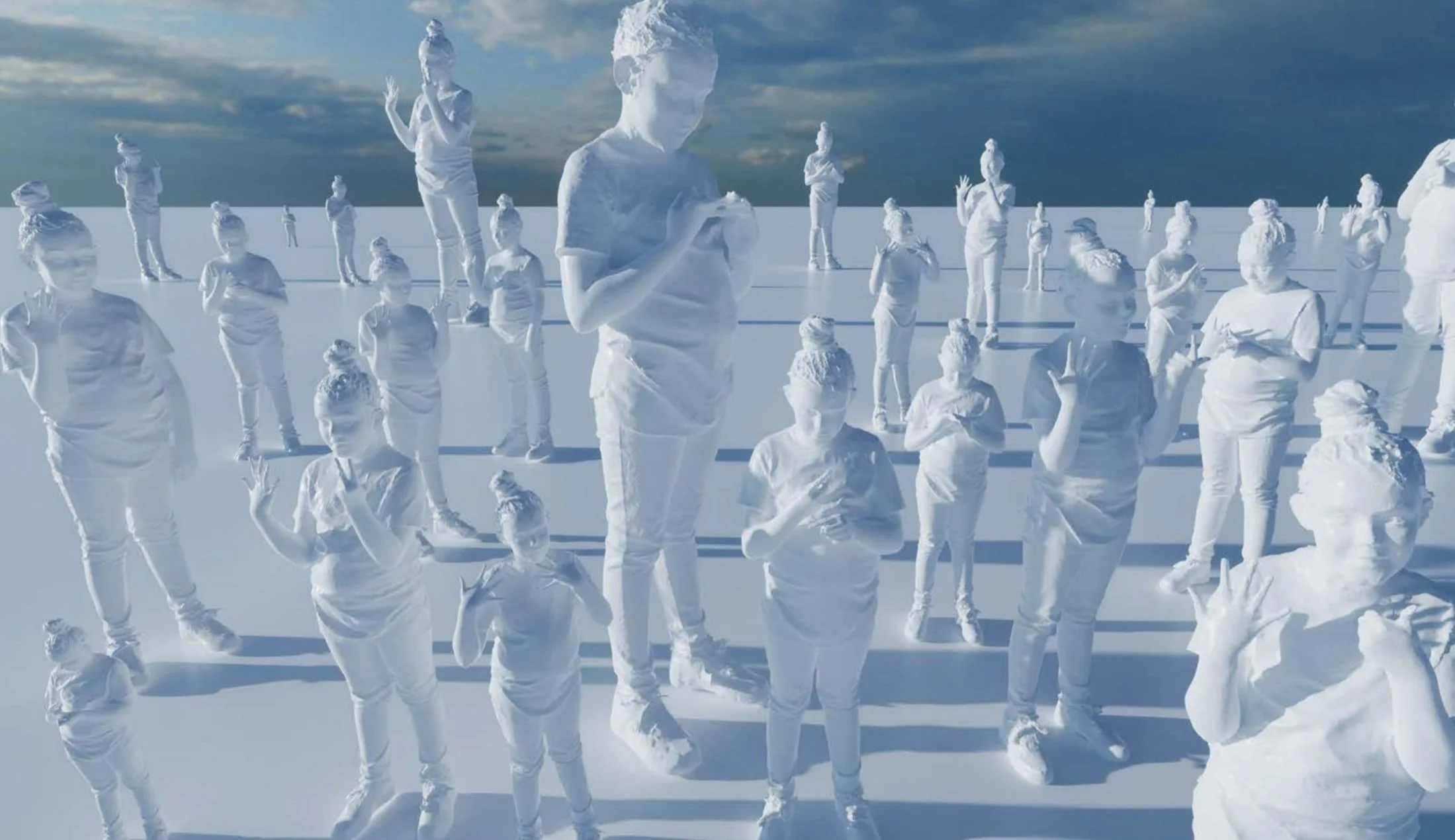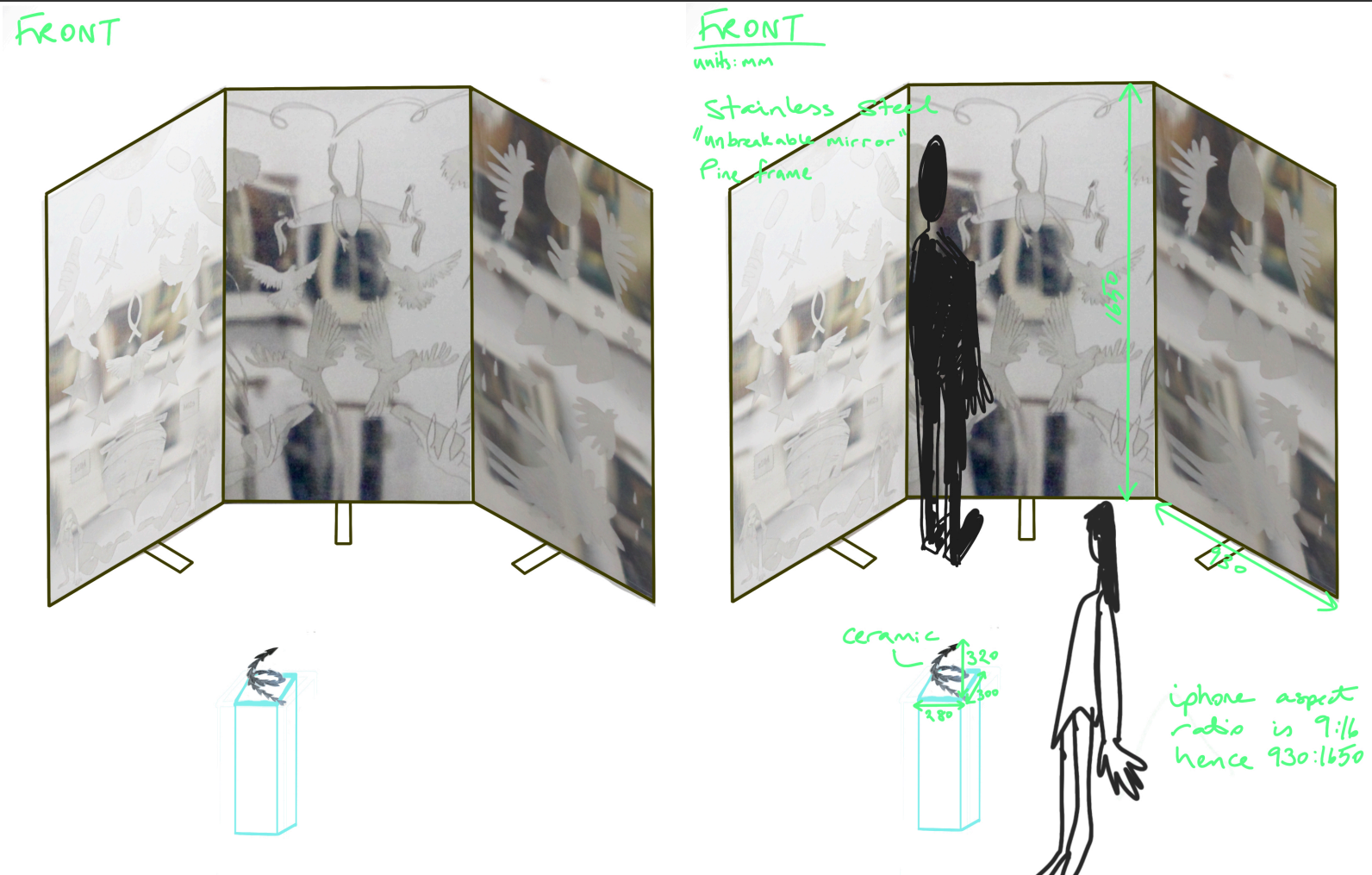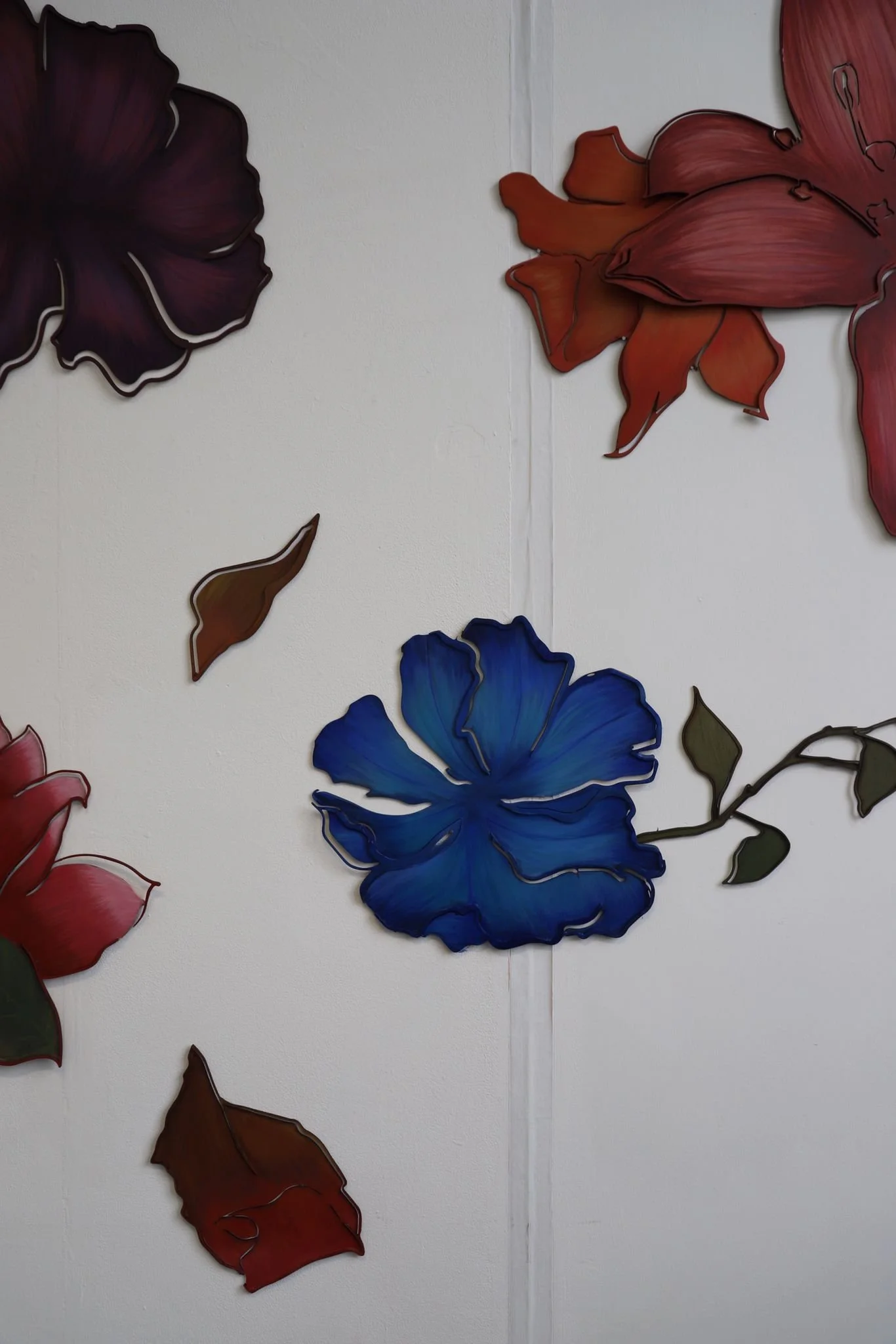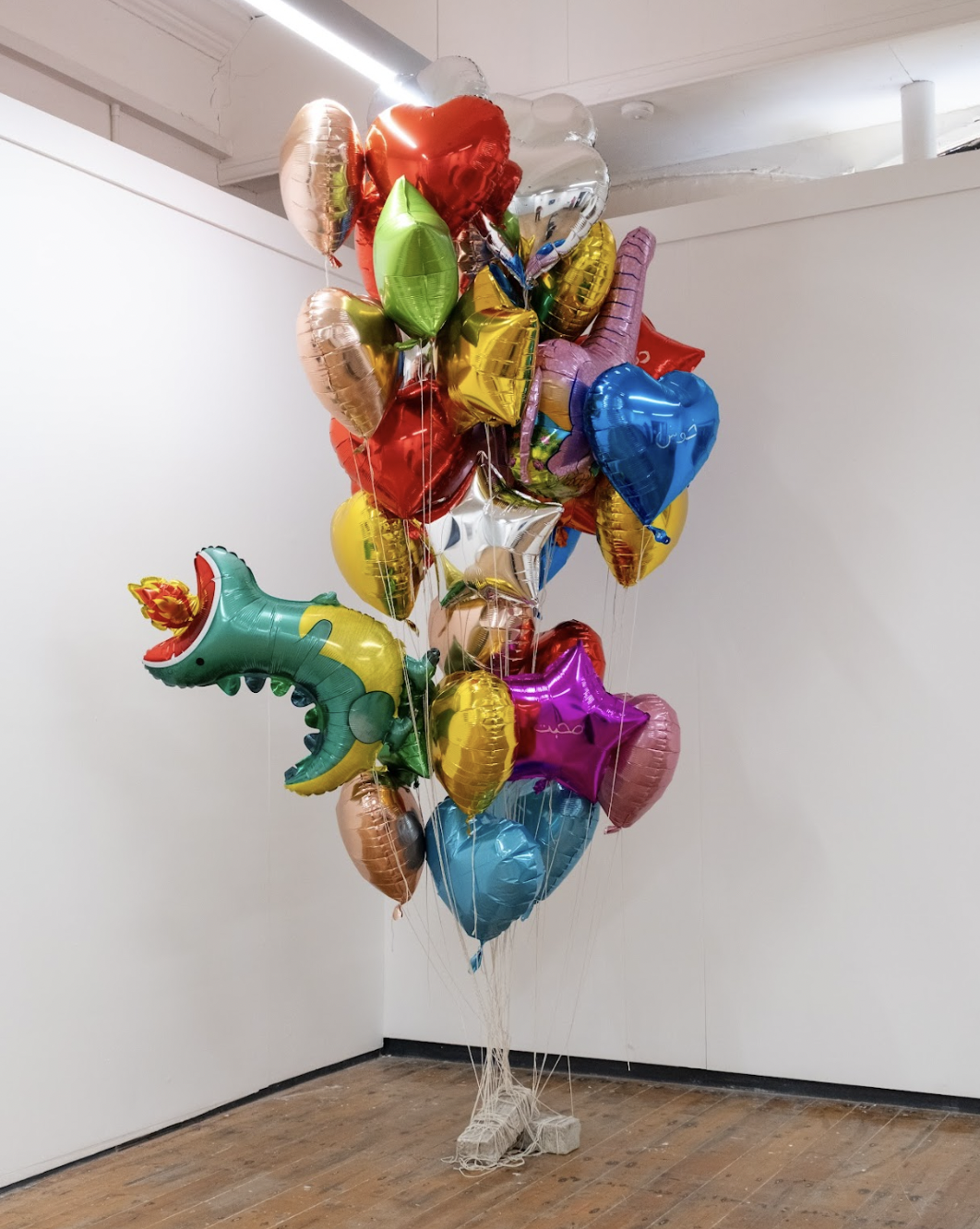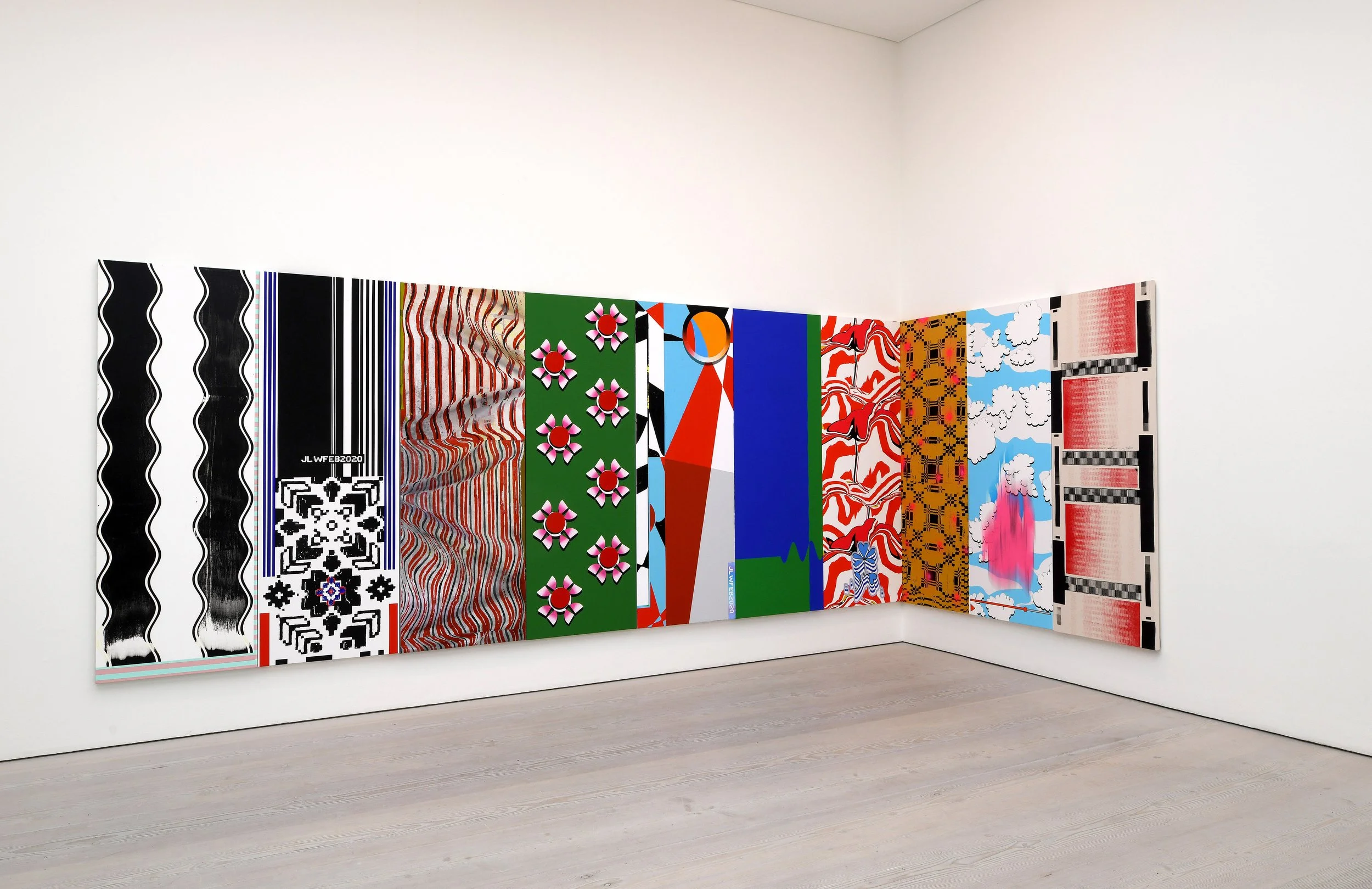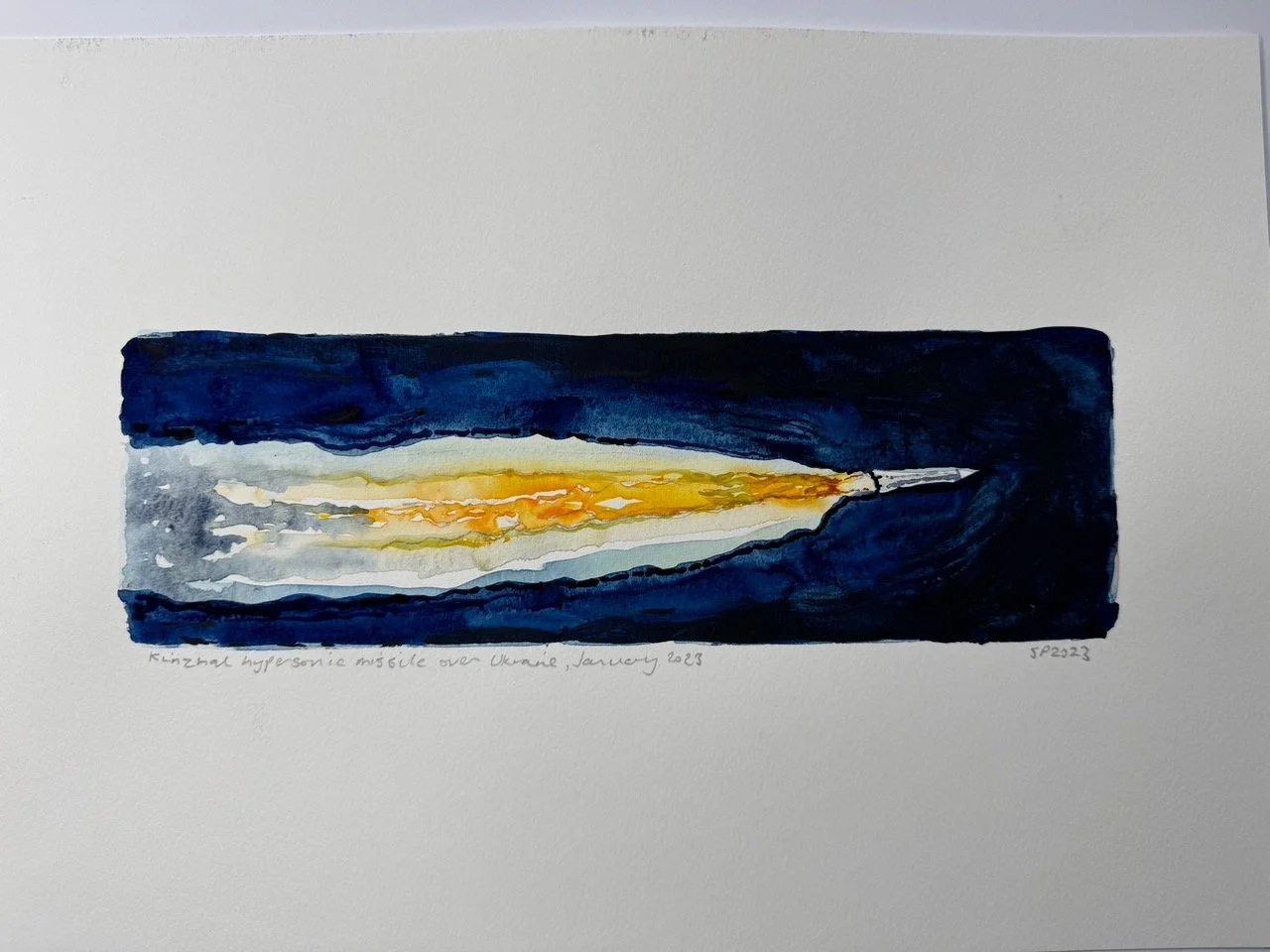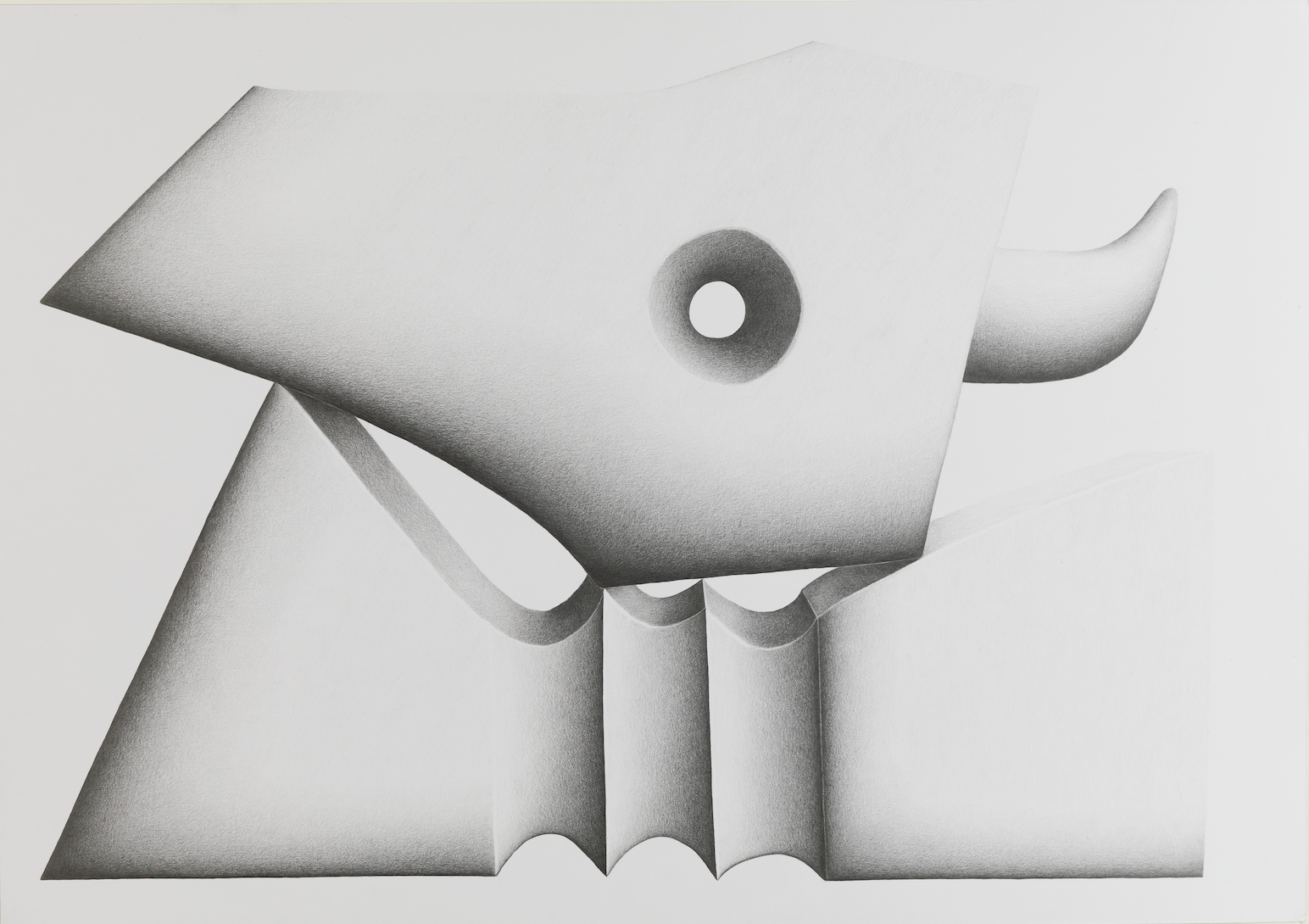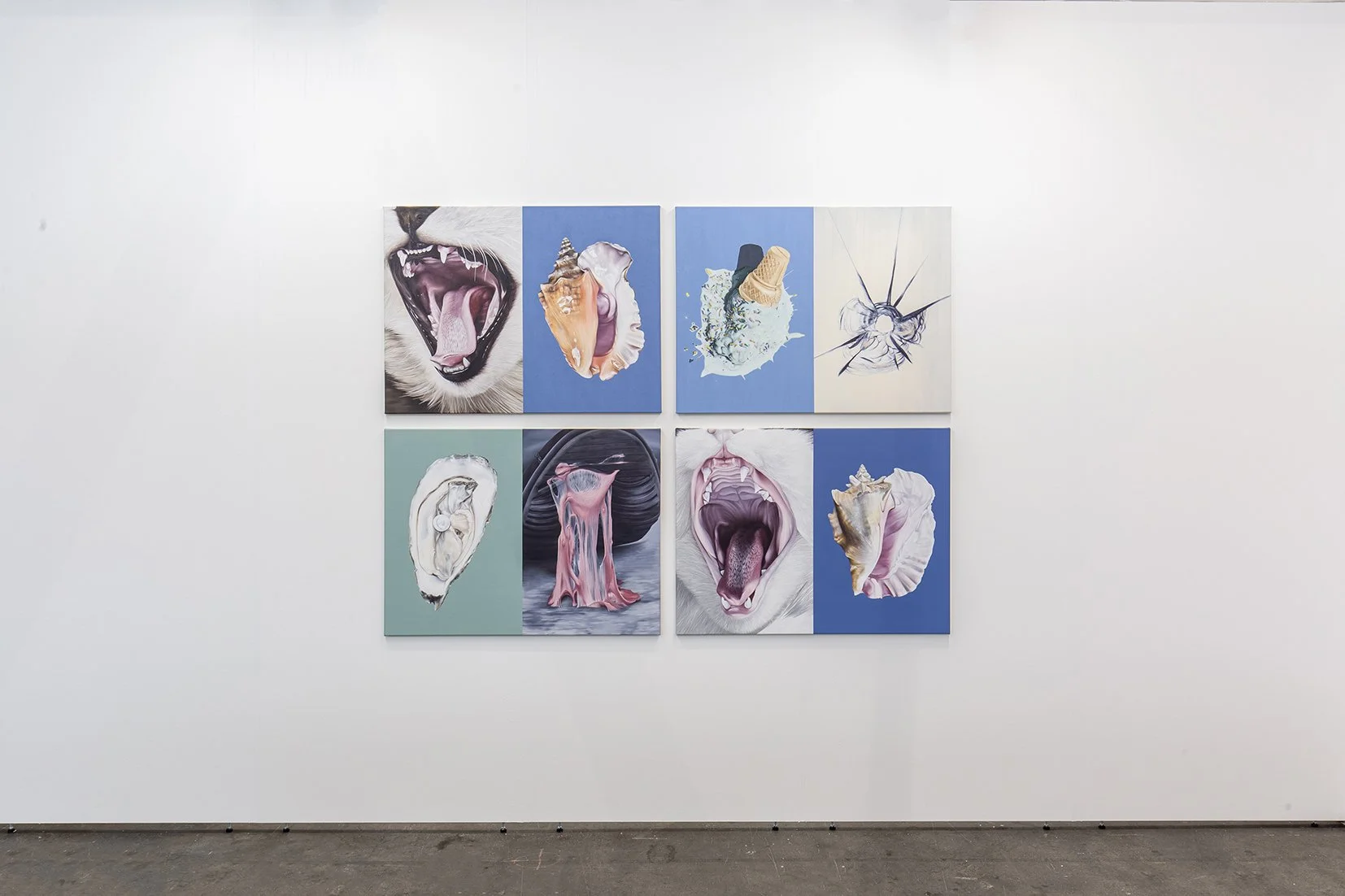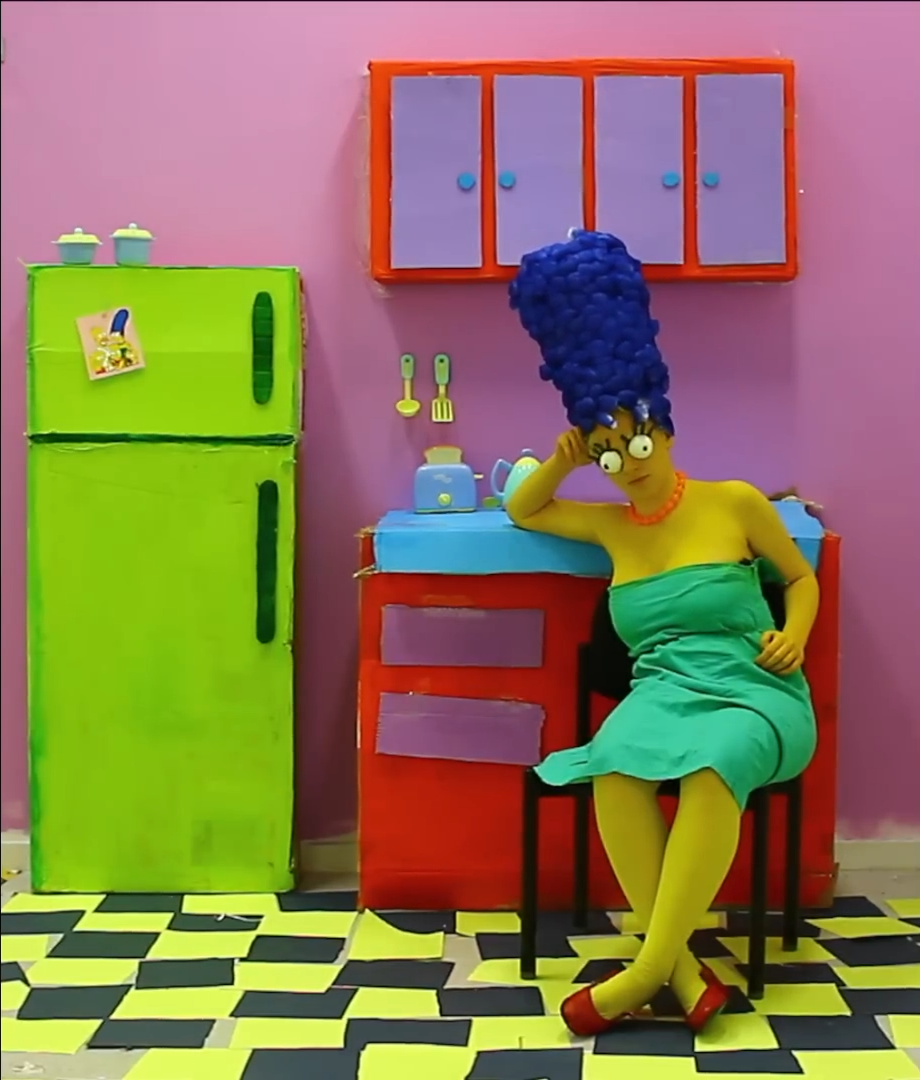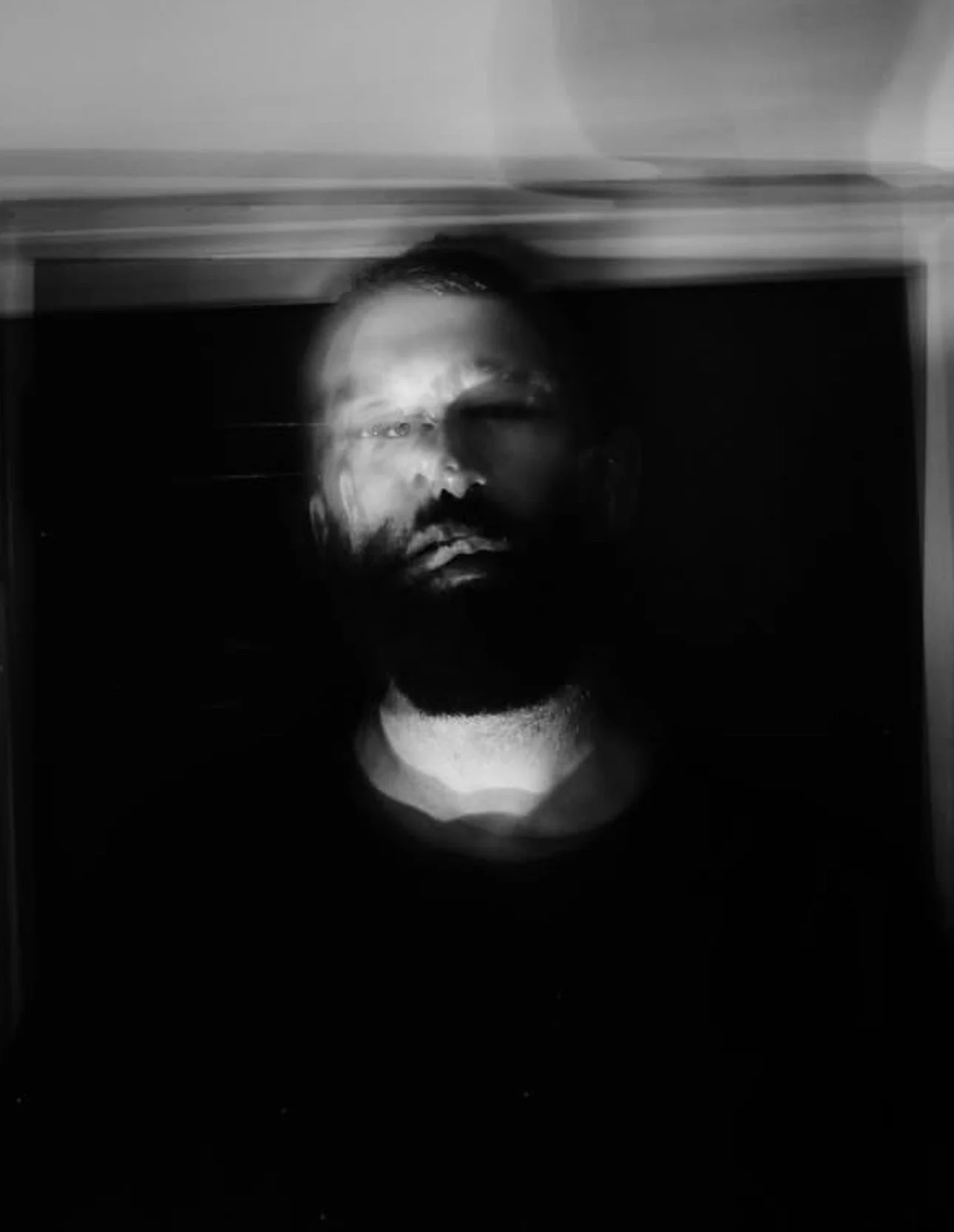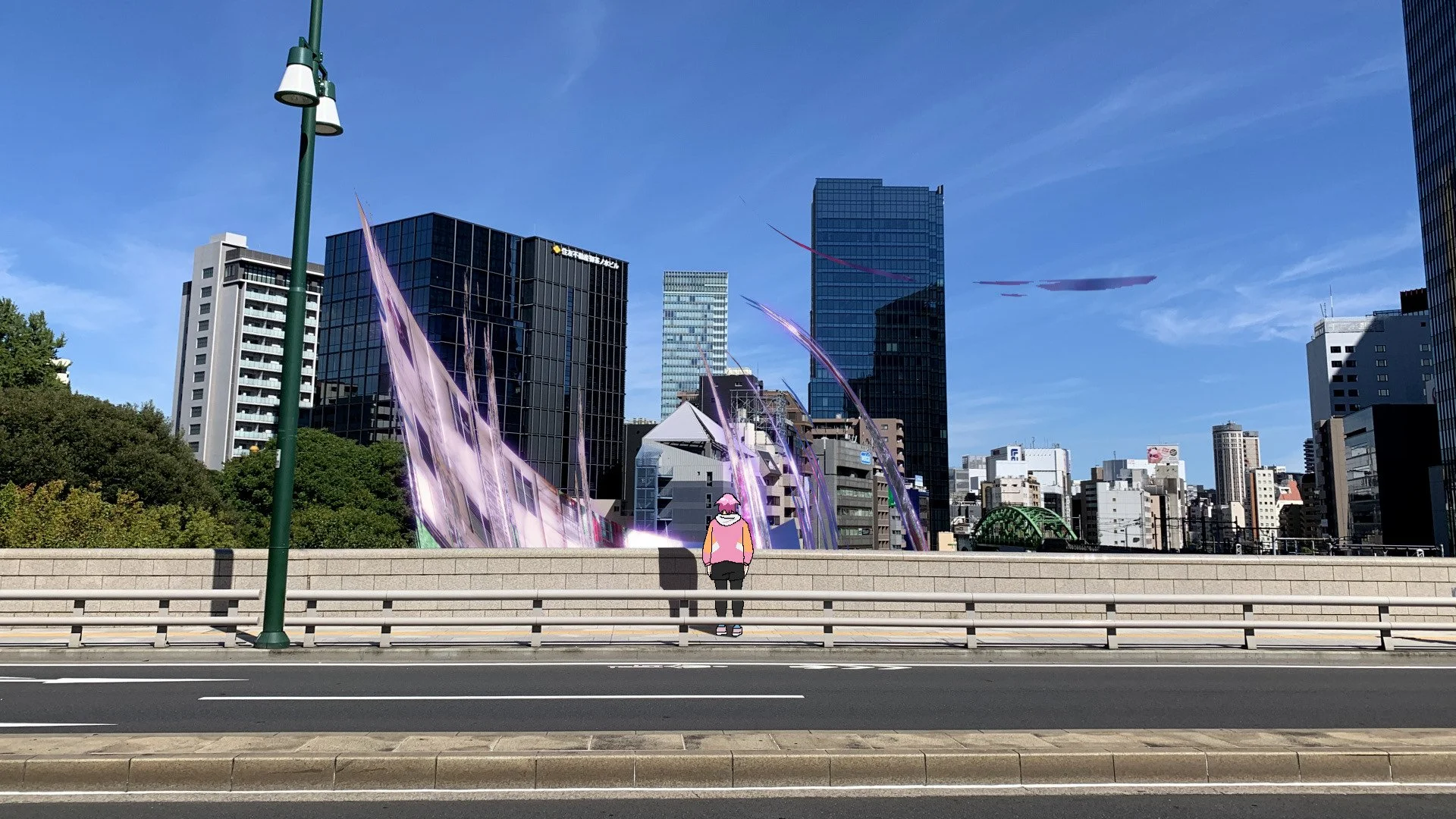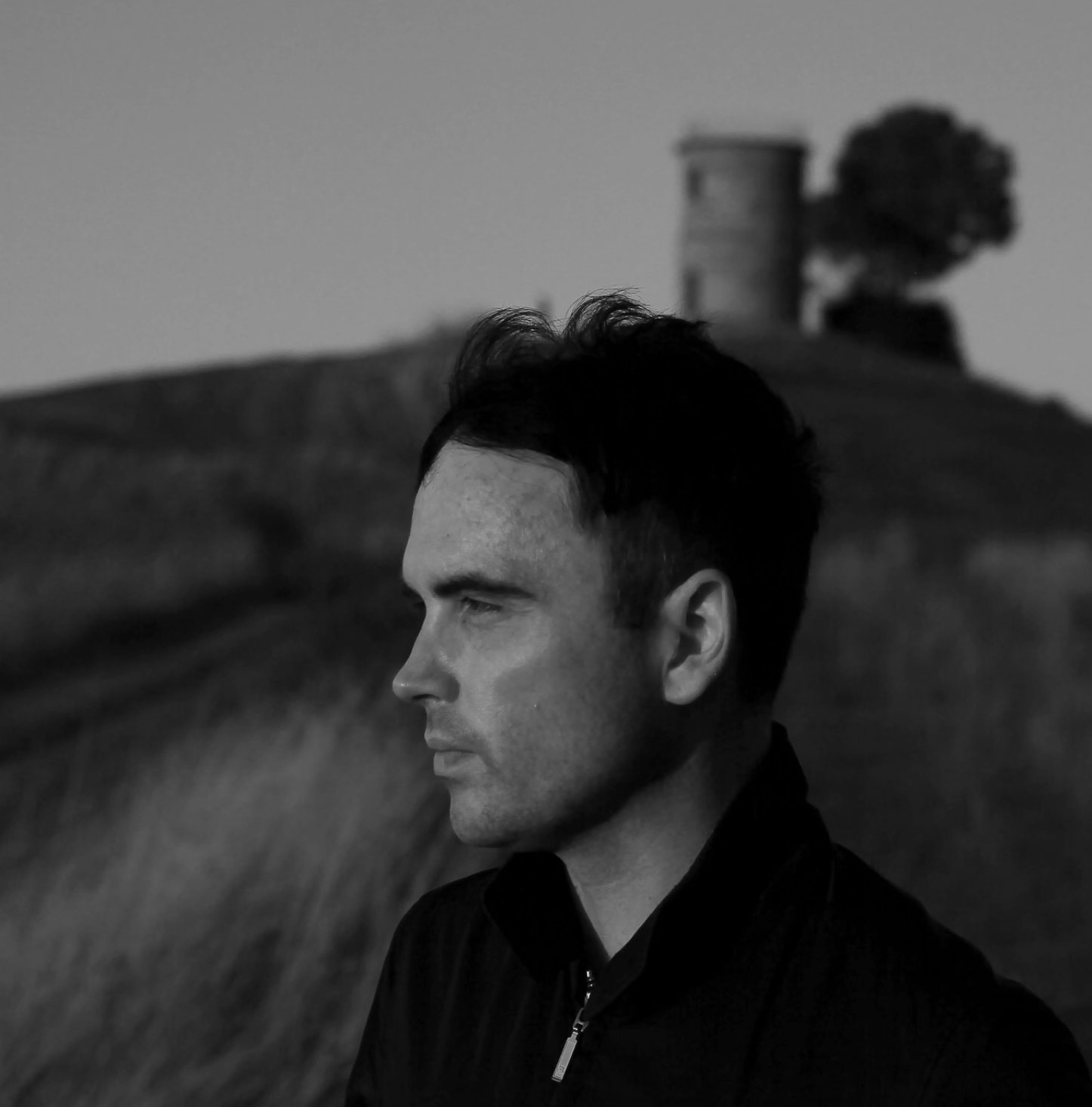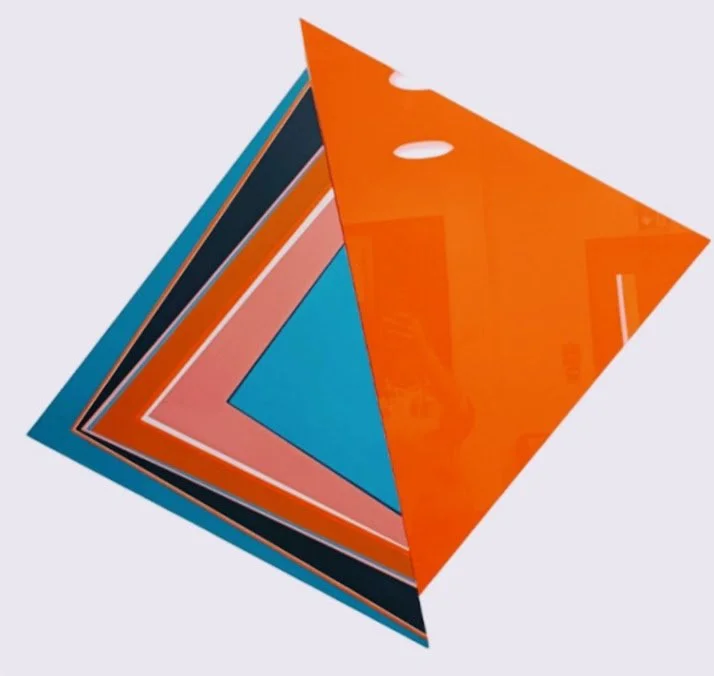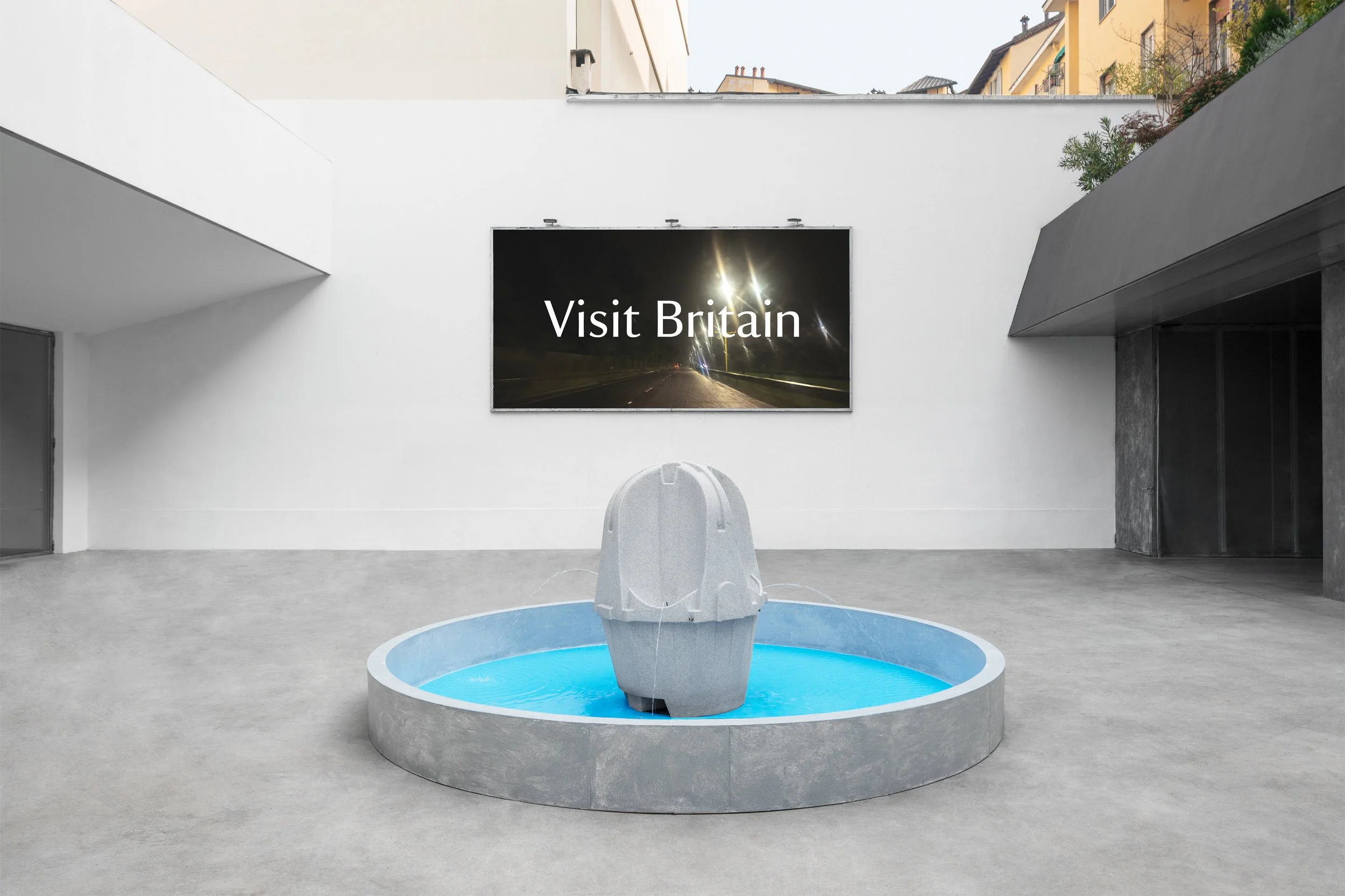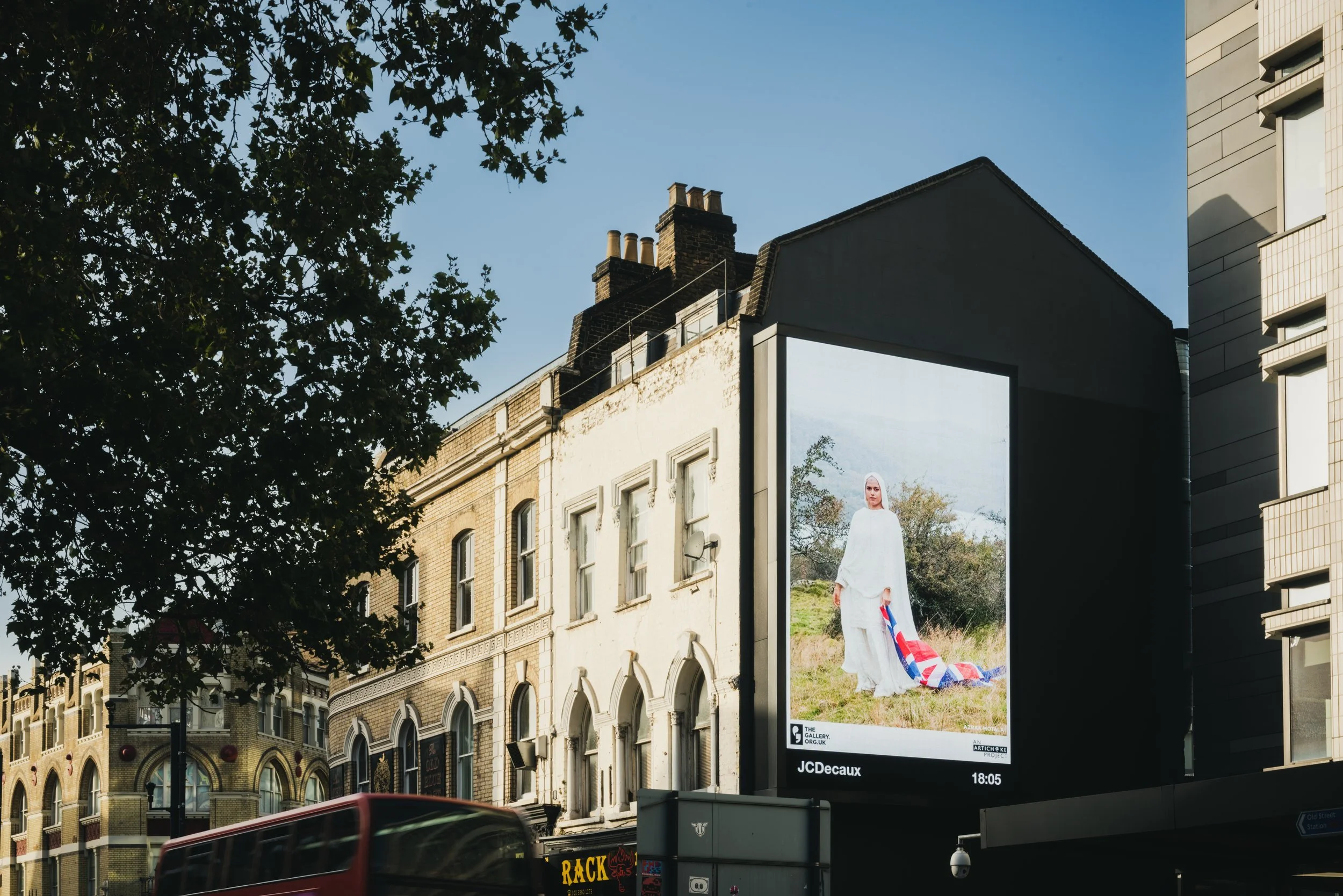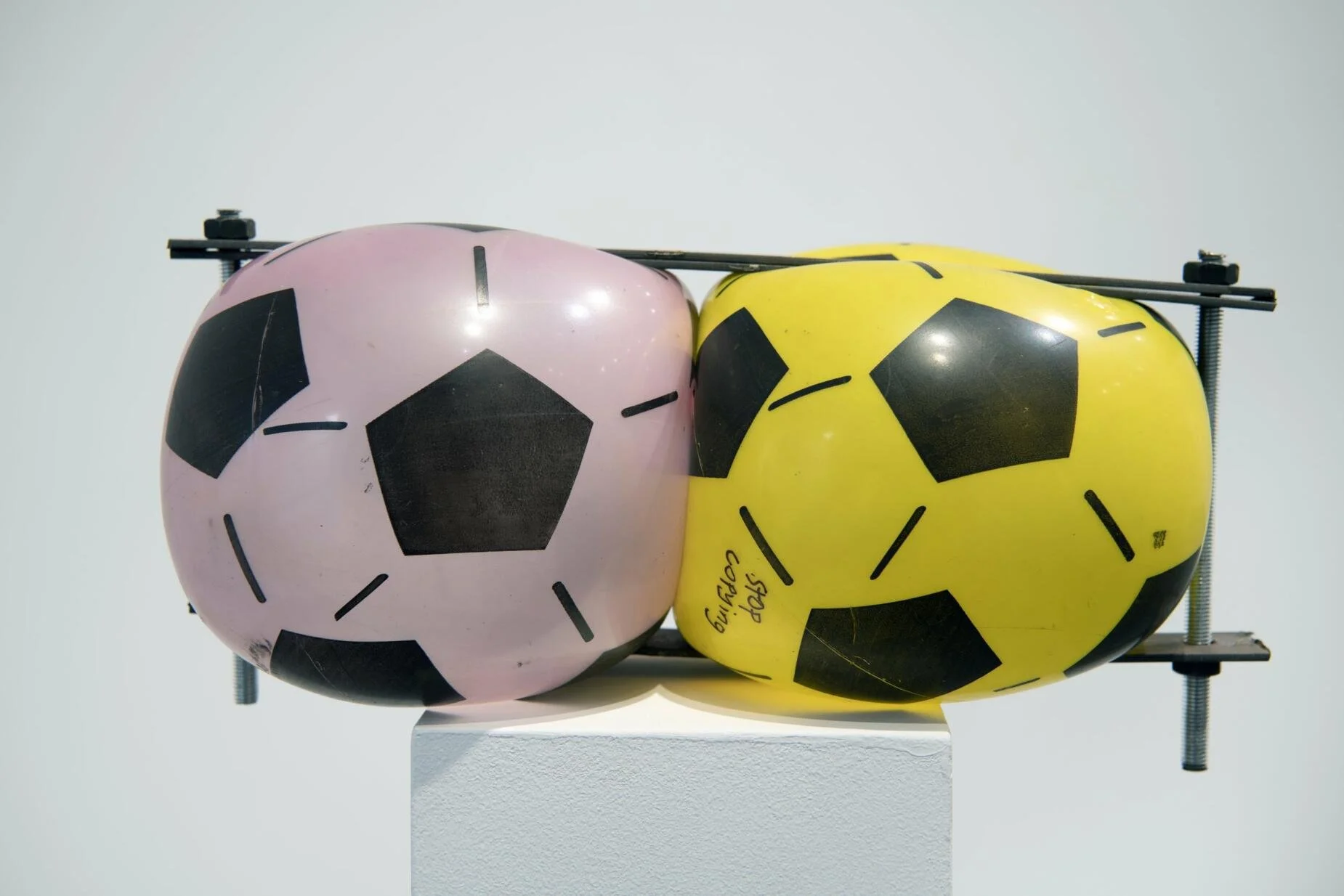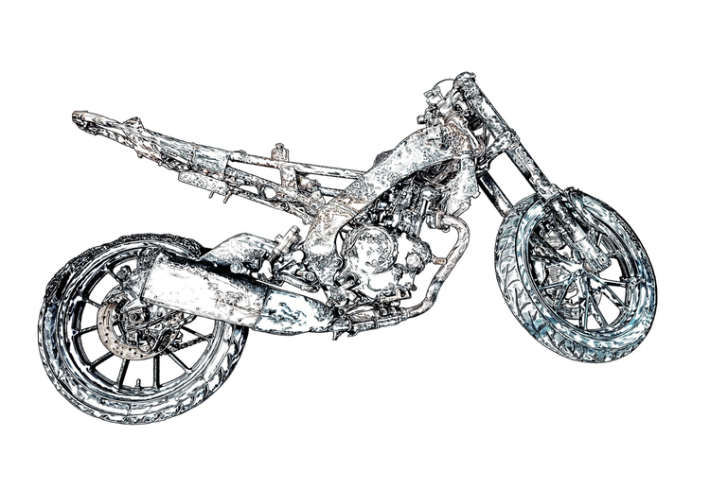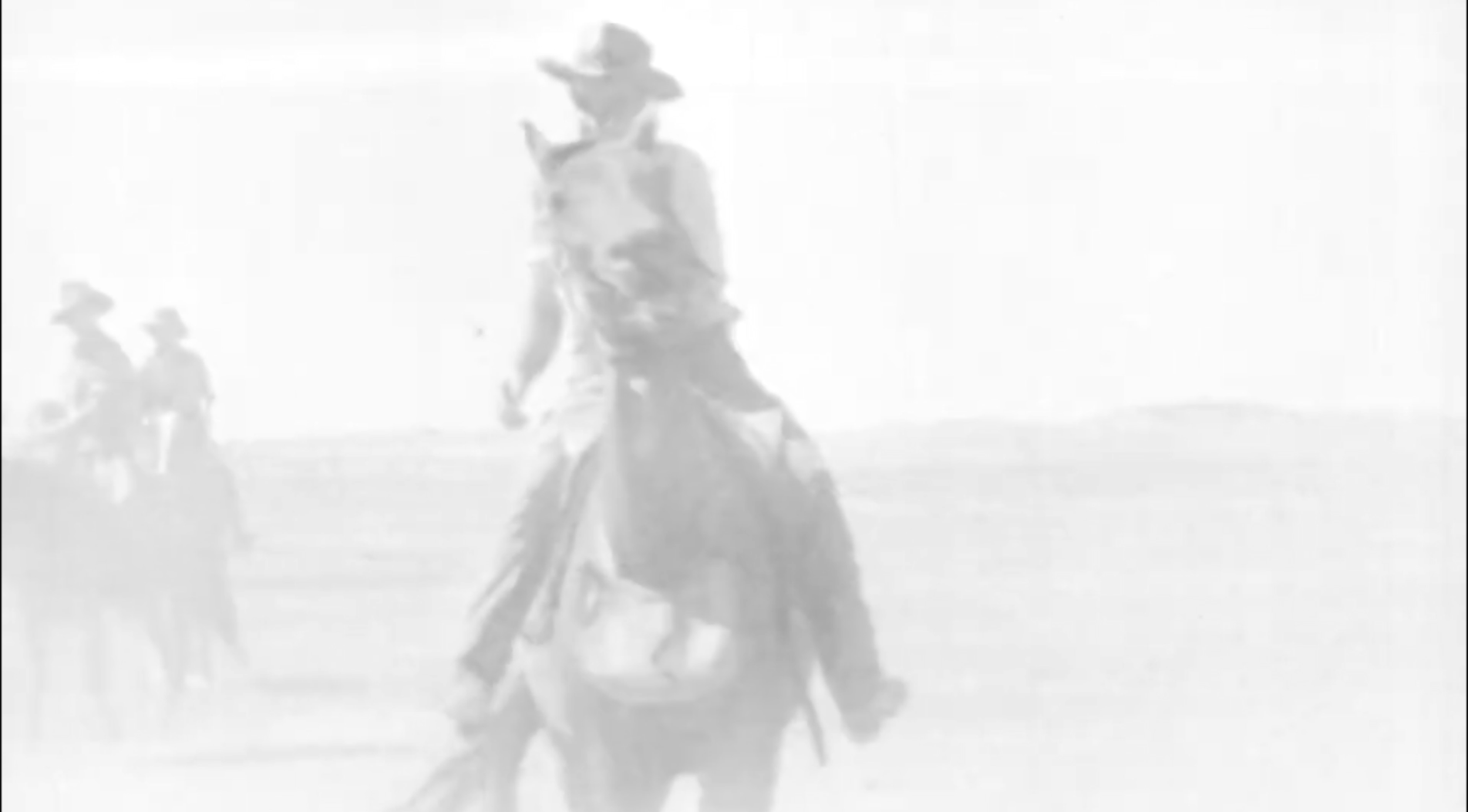FIRST WAVE OF ARTISTS
+
FIRST WAVE OF ARTISTS +
-
Close and Remote are Sophie Mellor and Simon Poulter, who frequently collaborate with artists such as Roney Fraser-Munroe and Jon Dovey. They have a national practice working with organisations including the Brigstow Institute, Cabot Institute, Cultural Engine, FACT, and others.
Their work spans film, performance, VR, drawing, and music, often focusing on climate change, culture, and overlooked or marginal spaces. Key projects include We Are Making A Film About Mark Fisher (2025), Live Model (2024) – a performance game on Net Zero – and Orchard (2024), exploring the social and ecological role of green spaces.
From 2024 to 2025, they lead the Personal to the Planetary cohort, a group of artists and activists engaging deeply with the climate emergency. Their approach values co-creation, embraces uncertainty, and sees aesthetics as a vital force in shaping cultural conversations.
-
John B Ledger (b. 1984, Barnsley, South Yorkshire) is a visual artist whose work emerges from lengthy autoethnographic and socio-political assessments. Taking the form of large-scale drawings, maps or films, his practice is deeply informed by the post-industrial landscape and the post-historical culture that defined his formative years. John’s work also looks at our relations to the ‘self’ in late capitalism and an age of social media overload.
-
Kitty McKay is an artist, researcher and DJ from Liverpool and is currently based in Newcastle upon Tyne. Kitty studied a Masters of Fine Art at Newcastle University. While studying Kitty also worked part-time at The New Bridge Project, an artist-led, DIY art and community venue
Kitty’s interdisciplinary practice embraces the politics of community and encompasses social impact research through moving image, sound, installation, sculpture, collage, live works and writing. They are especially interested in queer and feminist frameworks for exploring space and place. Kitty often works collaboratively to produce live and socially-engaged works.
-
Andrea Hasler is a Swiss artist who lives and works in London, UK. She holds an MA in Fine Art from Chelsea College of Art & Design. Selected solo exhibitions include Burdens of Excess (Gusford, Los Angeles/US), Irreducible Complexity (Next Level-Projects, London/UK), Full Fat or Semi-Skinned? (Bon Gallery, Stockholm), and Verbier Time + Space (New York/US). She won the Arts Council England funded Greenham Common Commission, producing a large site-specific installation that received significant press attention. Hasler has been an Artist-in-Residence at Verbier 3D Foundation (Switzerland and USA), Next Level Projects (Bahamas), and Chisenhale (London/UK). She lectures at various institutions, including the Sotheby’s Institute of Art, MA Art & Luxury, London/UK.
-
Slow White Fall is the experimental music project of British artist Oliver Ho, known for pushing the boundaries of sound through heavy atmospheres and emotional intensity. Drawing from ambient, post-rock, industrial, and death metal, the project creates music that is both meditative and overwhelming.
Slow White Fall made its live debut at Berlin Atonal, a key moment that revealed the full power and immersive nature of the project. In 2021, Oliver released the album Flesh In The Modern Age, a deep dive into slow-burning, cinematic soundscapes. This was followed in 2023 by Flood, released on Avalanche Recordings, the label run by Justin Broadrick of Godflesh. Joining Broadrick’s roster marked a natural progression, allowing the music to evolve into even denser, more distorted sonic realms.Slow White Fall. Each chapter of Slow White Fall reflects Oliver Ho’s personal exploration of sound—music that is not only heavy and hypnotic, but also deeply emotional and transcendent.
-
Using fine art as a vehicle for broader philosophical exploration, Carl Truscott’s work engages with fundamental questions about the nature of art itself. What constitutes art? What is it for? How do we understand it?
Adopting a multidisciplinary approach, his practice addresses the universal challenges of artistic representation, filtered through a personal philosophy that cynically aligns art theory with ‘superstition’ and our human tendency to draw significance from unrelated elements. This notion of ‘magical thinking’ -common within the art world - reveals a compelling phenomenon in both creator and viewer, and opens up a space to examine the tensions between artistic intent and subjective interpretation.
Carl’s current work explores these tensions by focusing on the role of context in the experience of art. How much of what we perceive in a gallery setting is influenced by surrounding works, curatorial framing, or prior knowledge of the artist? By engaging directly with fellow exhibiting artists, his amalgamate influences, creating a layered, expansive 'art-object' that reflects the exhibition as a whole.
-
Faye Magkanari’s work stems from a need to explore how Orthodox religion connects to memory, culture, and her experience as a woman. Growing up in Greece, religion was woven into everyday life-shaping how people behaved and what they believed. While she is not especially religious, she remains deeply aware of how faith influences social norms, particularly around gender. Her work reflects on this complex mix of personal belief, tradition, and inherited expectations.
These themes continue to affect and inspire Magkanari, though she is also curious about where her practice might evolve-exploring ideas not always tied so directly to religion. Broadly, she is interested in the body, especially the female body, and in symbols that are easily recognised and widely accepted, regardless of their form. She works across clay, casting, metal, and wood, though she primarily identifies as a ceramist and secondly as an interdisciplinary artist. Rather than delivering a clear critique or telling a single story, her work seeks to open up space for reflection on what we inherit, what we carry forward, and what we quietly resist. Whether her work makes viewers feel uneasy or understood, she hopes it invites them to sit with the complicated intersections of faith, womanhood, and cultural memory.
-
Based in Bethnal Green, Corbin Shaw (b.1998) is a Sheffield-born artist, and Central Saint Martins graduate, exploring themes of personal & national identity, modern day folklore and masculinity through his multimedia practice.
Collaborations include Women’s Aid, BBC Sport , Fred Perry & The Pet Shop Boys. His work has been featured on cover’s for EXIT, Perfect Magazine and Circle Zero Eight . As well as features in The Guardian, The Face, Dazed, Metal Magazine and the Talk Art Podcast.
Corbin Shaw presented his fifth solo show, 'Eurotrash' at Spazio Maiocchi, Milan as an examination of the nuanced identity of Britain in the wake of Brexit. His fourth London solo show ‘Little Dark Age’ at Incubator, Marylebone, explored modern day Britishness through ancient crafts, questioning the meaning of tradition and what it means to be ‘English’ today. ‘The People Fled When The Sun Went Down’ showed at Jealous, Londonin 2023 where he pulped and recycled stolen copies of the sun newspaper to hand-make the paper for 22 original prints. He uses tabloid headlines against themselves in a mission to expose the hypocrisy of the British tabloids. In 2022 he presented 'Nowt as Queer as Folk', Guts Gallery, London, where he explored Folk Law and tradition in comparison to his South Yorkshire Village. Also in 2022 Corbin showed 'Martin Parr & Corbin Shaw' at OOF in London, where his work was shown in collaboration with legendary British artist Martin Parr to pay a homage to the Football Fan. Corbin has exhibited at the design Museum as part of 'Designing the Beautiful Game'. As well as at OOF alongside artists Jeremy Deller, Douglas Gordon, Lydia Blakeley and many more
-
(b. 1979) is a British artist based in London.
Working across performance, sculpture, and video, their practice explores power and resistance. Much of their work intervenes in systems of global production, interrogating the relationship between consumerism and Empire.
They have produced work in China, India, Palestine, Senegal, Taiwan, Egypt, Somalia, Cambodia, Mexico, and Greece. In each case, they have sought ways to collapse space—geographic, historic, and bodily—to explore the entanglement between contemporary consuming practices and histories of colonial domination. In the process, their work often appropriates the aesthetics of capitalist spectacle: its forms, structures, and surfaces. They regularly collaborate with industrial facilities, film crews, and fashion photographers. Their visual language is characterised by a wrong-headed commercialism: a seductive kind of nonsense that continually punctures its own logic.
In brief, they make art to challenge the tyranny of common sense—to rupture logic, collapse norms, and weaponise humour to political ends. The result is a form of radical absurdity, plunged through the surface of neoliberalism: a monster that devours itself.
-
Nika is a Ukrainian multimedia artist from Kyiv, based in London since May 2022 after the full-scale war reshaped her life. With 12 years of classical piano and organ training, she also works across painting, sculpture, performance, and film. A graduate of the Kyiv School of Art and Music No. 5 (2019), she has participated in concerts and exhibitions across Ukraine and Europe and appeared in the Berlinale-winning feature Stop Zemlia by Kateryna Gornostai.
Since 2024, she has been part of Triyka, an art collective she co-founded, which has held exhibitions in London. In 2025, she was nominated for Photo London. Currently focusing on analogue photography and film, Nika sees cinema as a medium that unites visual art, sound, performance, and storytelling—her way of communicating with the world and connecting with herself.
-
Ukrainian artist. Born in 1996 in Kyiv. She works with moving image, sound, photography, and performance. Her practice explores productive archiving, corporeality, and the relationships between humans, nature, and technology. Since the beginning of the full-scale invasion, Svitlana has worked across Ukrainian cities as a producer with international media outlets such as ZDF
(Germany), Corriere della Sera (Italy), RAI (Italy), and ANSA (Italy). Since September 2023, she has been studying time-based and visual arts at the University of the Arts London (UAL), Central Saint Martins.
-
Rosie Gibbens (b.1993) is a London based sculpture artist. Gibbens studied Ba Performance Designs and Practice at Central Saint Martins in 2015 and then went onto study Ma Contemporary Art Practice performance in 2018. She has had many solo exhibitions and performances that have included, ‘Parabiosis’ , The Bomb Factory, London in 2024, ‘Skin of my Teeth’, Midlands Arts Centre, Birmingham in 2022 and ‘Carrot and Stick’ at the Somers Gallery in London in 2019.
Gibbens makes performances and photographs that use her body. She explores the overlaps between identity, labour and consumer desire. She often makes sculptures that combine household gadgets with sewn body parts. Rosie playfully blends these things to unpack and question the future body as it becomes increasingly ‘optimised’ by technological development.
-
Erin Dickson is a sculptor. She initially studied Architecture at the Architectural Association in London and later went on to complete both her MA and PhD at the University of Sunderland. Dickson’s work has been exhibited internationally, including at Glasstress, The National glass centre, The Baltic Centre for Contemporary Art and FACT in Liverpool. She has received international grants and awards including an Honorary Diploma from the Jutta Cuny Foundation, Germany, and a National Lottery Project Grant from Arts Council England.
Dickson explores tongue-in-cheek themes of ‘Britishness,’ particularly in relation to her birthplace in North East England. She works in the space between craft and digital manufacture, operating both physically and virtually to develop systems of correspondence. Through humour, her sculptures, videos, and installations deliberately soften provocative subject matter, including British class systems, AI bias, intimacy, community, and isolation.
-
︎︎Iris Ollier is a multi - disciplinary artist and curator working a number of mediums such as sculpture, design and image - making. Ollier studied Fine Art at Newcastle University between 2019 and 2023. She went on to exhibit widely across the UK, including in Newcastle Arts Centre in 2024 and Shieldfield Art Works, Newcastle in 2023.
Iris Ollier explores embodied perception and the unspoken aspects of human experience through novelty objects. Her work engages with themes of attention, social media, and the physical act of looking, described evasively as art that can manipulate space and perception.
-
A Man Called Adam are a British music duo, Sally Rodgers and Steve Jones. The Duo have been making electronic music since the late 80s. Coming back into the spotlight in 2019 with their album ‘Farmarama’ they have performed live at many festivals including Gilles Peterson’s We Out Here and Kala Festival in Albania.
The duo explore diverse musical influences but always sounding recognisably themselves. They avoid defining their style but have produced tracks that are in the genes such as Jazz, Basware and Nu British house.
-
Zaeemah is a multi-disciplinary artist who recently received her Fine Art degree from Teesside University. She received the New Graduate Award and has shown at Pineapple Black, Python Gallery, Constantine Gallery, and MIMA (Middlesbrough Institute of Modern Art).
Her practice spans a range of mediums, with recent works incorporating acrylic painting, laser cutting, and cyanotypes. She is drawn to experimentation and continually explores new materials to expand her visual language.
During her third year, leading up to her degree show, her practice began to focus on the emotional and physical experiences of migration. Her work explores the challenges, resilience, and quiet strength that arise through displacement and the process of beginning again.
A recurring symbol in her work is the flower, representing movement and transformation. Like migrants, flowers are uprooted, carried and replanted in unfamiliar places. Even seeds travel by wind, water, or time. Carrying with them the potential for renewal. This poetic imagery speaks to an ongoing process of adaptation and survival.
The theme of migration is deeply personal for her as the child of a first-generation immigrant. Her work serves as a response to her mother’s journey, honouring both the struggle and the beauty that comes with change. It invites viewers to reflect on identity, belonging, and the quiet power of resilience.
As an emerging artist, she continues to explore how material and metaphor can communicate personal and collective stories of movement and growth.
-
Charlotte's artist practice focuses on the transformative act of self decoration. She is interested in the relationships connecting pain and glamour. Charlotte's artistic practice involves a process of layering multicultural symbols of power to illustrate a universal recipe to empower oneself. To create her textile pieces Charlotte sources second hand women's clothing to tie her to a female audience, this also aids her work to be more sustainable and unique depending on what she can find. Using textile based arts connects Charlotte to a lineage of women that inspire her work, further allowing the work to be viewed through a feminine lens. As an artist she is drawn to beads and sequins to represent the ‘precious’ objects we layer onto ourselves to cultivate power. The comforting nature of quilting and the brutal mechanical nature of the piercing needle speaks symbolically about her themes exploring the connection between pain and glamour.
Through her work Charlotte enjoys world-making and storytelling, she combines a blend of history and modern day culture to produce playful narratives where women hold all the power and look fabulous while doing so. Throughout her work the tiger is a continuous symbol of power, prowling alongside fierce female characters in her femme fantasy world.
Charlotte has recently graduated with a first class honours in Fine Art from Northumbria University, resulting in the opportunity to exhibit her work in the Baltic Centre for Contemporary Arts. Through the New Graduates award with Middlesbrough Art Week she is exploring new ways of working post graduation.
-
Over the past two years, Bethany Dallas has focused on building a clear artist identity, embracing her personal aesthetics to develop a strong connection between herself and her work. This has resulted in a distinctive visual language centered around the color pink. She uses pink as a form of reclamation from misogynistic ideals that label it as weak or unimportant. As a working-class, fat woman, Dallas consistently draws from her lived experience to inform her work. She believes that art can never be truly apolitical, and her practice is rooted in the idea that representation for marginalized groups is vital and deserves a place in art. Much of her work is deeply personal, yet she appreciates when others can feel seen and represented within it.
Dallas’s practice is not fixed to a single medium; she begins with a theme or concept she wants to explore and then selects the medium best suited to express the idea, whether through photography, painting, or, most recently, fabric-based sculpture. This flexible approach allows her to remain experimental while maintaining the core themes present throughout her work.
-
Azraa Motala is a visual artist from Lancashire, her multidisciplinary practice spans large-scale oil painting, photography, video, poetry, and site-specific interventions. Exploring the intersections of identity, culture, and belonging through the lens of her experience as a British South Asian Muslim woman.
Her work is grounded in a critical exploration of empire, history, and the politics of representation. Through a reclamation of space and narrative, she challenges orientalist portrayals of women in art and interrogates the legacies of colonialism that continue to shape contemporary cultural discourse. Increasingly, her practice is concerned with the role of place in shaping identity. Recent work reflects a growing engagement with rural England as a site of both personal reflection and wider historical resonance. Drawing connections between the landscapes of Britain and the diasporic memories of migration, heritage, and displacement, considering how natural environments can hold and reflect layered narratives of exclusion, belonging, and cultural identity.
Motala is committed to socially engaged practice, often working collaboratively with communities to foster dialogue and creative exchange. Her work not only examines what it means to navigate the world as a woman of colour in Britain today, but also contributes to a wider reimagining of British art and landscape traditions from a decolonial perspective.
-
Furtherfield is an artist-led community arts organisation and gallery based in Finsbury Park. They create and support global participatory projects with networks of artists, theorists and activists. They’re mission offers a chance for the public to present their own views and enter or alter various art discourses.
Since late 2020 they have been immersed in the massive Interspecies Treaty LARP as part of their participation in the EU Horizon 2020 funded CreaTures project. All participants advance more-than-human justice by playing the game as other species, representing them in Assemblies to discuss and plan an Interspecies Festival that will celebrate the signing of an Interspecies Treaty of Cooperation in 2025. Treaty was conceived by Ruth and Cade Diem, launched in Finsbury Park, and is now available to be fully adapted and played anywhere.
We’ve been collaborating with Furtherfield for FiP:ARR (Futures in Play; A Radical Reimagining) a project which aims to empower communities in Middlesbrough by fostering imaginative, participatory playful spaces where local voices can shape collective futures.
Furtherfield have been co-creating with local communities a speculative role-play game called Chamber LARPs (Live Action Role-Playing scenarios), FiP:ARR will amplify underrepresented voices, explore and experiment with alternative futures, and transform collective agency into pathways for radical reimaginings. The project will consist of a series of workshops, community visits, development of a new and unique LARP game, and public presentations at Middlesbrough Art Week.
-
Zara Saghir is an Assistant Producer for The British Textile Biennial (BTB) and The Super Slow Way (SSW)—a place-based cultural programme working with communities across East Lancashire. BTB explores the politics of cloth in the post-industrial landscapes left behind by the cotton industry, engaging with communities that have textiles woven into their heritage. SSW delivers an ambitious programme of artist commissions and residencies, collaborating with people, partners, and heritage sites to reimagine a 20-mile stretch of the Leeds–Liverpool Canal as a new Linear Park for Pennine Lancashire.
In her role as Assistant Producer, Zara has supported a wide range of cultural projects, contributing across planning, administration, installation, workshops, and community engagement. As a socially engaged artist herself, she understands the importance of fostering meaningful, collaborative relationships between artists, communities, and artworks.
Through her own creative practice, Zara explores taboo issues within her British South Asian culture, interrogating systems of power, values, and hierarchy. She draws on her personal experiences to create
space for voices that have been overlooked or silenced—helping them to be heard and encouraging advocacy through art.
Zara is currently developing new photographic works as part of a month-long residency in Islamabad, supported by The British Council, Art of Small Talk (Islamabad), and Insitu (Pendle).
“As a Pakistani woman born in England, I’ve grown up with a deep appreciation for my cultural roots. I feel a strong responsibility to engage with women who have been shaped by similar narratives. I am reaching out in the hope of connecting with the women you work with, as I believe their stories and lived experiences are invaluable.”
Her artistic practice centres on how women uplift one another and create spaces for honest, empowering dialogue—whether through shared struggles, achievements, or reflections on the journeys that have brought them to where they are today. She is particularly interested in speaking with women who have fought for their rights and hearing their hopes for future generations.
Following an enriching research residency in Islamabad—and winning The Blackburn Open 2025, where her work was acquired for a permanent collection—Zara is now focused on expanding the photographic, video, and audio works she created in Pakistan. With the support of curatorial guidance, she aims to shape this into a cohesive solo exhibition.
As an artist of Asian heritage, she is driven by the potential to create challenging yet inclusive work that better reflects the rich diversity of Blackburn’s creative community.
Mrs Khan explores marriage, gender roles, and cultural identity, blending sharp humour with moments of quiet reflection. Rooted in both South Asian and Western heritage, the exhibition questions who holds power in rituals of union and what it means to challenge, subvert, or reclaim those roles. Artist Zara Saghir explores taboo issues within British South Asian culture, interrogating systems of power, values, and hierarchy. Drawing on personal experience, she creates space for voices that have been overlooked or silenced, using art as a tool for advocacy, care, and cultural activism.
-
Oksana Kazmina is a Ukrainian artist, filmmaker and educator, who works at the intersection of performance and moving image. She is also a participant in the cine-movement and NGO “Freefilmers,” which was originally founded in Mariupol, Ukraine.
Since 2015, Kazmina has been working on her debut feature, “Underwater,” which evolved into an online exhibition www.dokvira.cam. Just before the full-scale invasion of Ukraine, Kazmina initiated a series of media performances “Contemporary History of Ukraine,” (CHU). Currently,
Kazmina teaches video art courses at Syracuse University (USA), and conducts research on ritual and moving image, with focus on the work of Kyiv-born avant-garde artist and filmmaker Maya Deren.
At Middlesbrough Art Festival, Kazmina will present 21st episode of CHU. CHU is a live montage of audiovisual materials from Kazmina's personal archives, including footage from
Kyiv’s underground art and music scene of the past decade, film expeditions to Eastern Ukraine with cine-movement and NGO Freefilmers, maps, microscopic imaging of Kazmina’s biome, and more.
-
Platform Films are Chris Reeves, Ann Diego, Christine Tongue and Norman Thomas.
Platform emerged in 1982, inspired by the legacy of Cinema Action, a London-based collective whose films reflected the socialist ideas and trade union militancy of the 1960s and 1970s.
Platform continues the tradition of left-wing filmmaking begun in the 1930s by the Film and Photo League and the Progressive Film Institute, with the goal of raising political and social awareness and inspiring change.
-
Darren Cullen is a satirical artist, activist, illustrator and writer. He was born in Leeds to Irish immigrant parents and is currently based in London. Cullen studied advertising at Leeds college of art, where he learnt the techniques and language of the medium but changed direction when he learnt about the ethical implication involved in this career path after moving away from advertising, Cullen moved on to study fine art at Glasgow School of Art.
In his work, Cullen used the language of advertising to communicate the empty promises of consumerism and the lies of military recruiters. Cullen has gone on to publish several comics releasing his first one in 2013 called ‘Join the army’. Cullen has also written a series of short films called "Action Man: Battlefield", to draw attention to the way the Ministry of Defence targets children as young as five with its official toy range,which includes an RAF Drone Playset.
-
Jonathan Lloyd West is a British artist based in Redcar, working across painting, printmaking, drawing, digital, and mixed media. West studied at Camberwell College of Arts (BA) and the Slade School of Fine Art (MFA). His ongoing series Infinite Scroll uses layered processes to build compositions that refuse a clear beginning or end. These works explore the visual and psychological effects of endlessly scrolling through digital content, inviting moments of reflection and interruption.
West’s recent exhibitions include Studio Response [3] at Saatchi Gallery, London (2022–23); Ancient Mew at Conditions, London (2022); and Everybody Knows This Is Nowhere: Painting in the North East. Now at Newcastle Contemporary Art, Newcastle upon Tyne (2022). He was a finalist for the Contemporary British Painting Prize in 2018.
-
Simon Poulter has an established national profile as both an artist and curator. His recent work has included a series of large scale commissions working with Minity, as part of the University of East Anglia Future and Form program. In 2019 he worked on a large-scale Heritage Fund project in Finsbury Park, London. This involved partnerships with the Museum of London, 2NQ and the Friends of Finsbury Park. The project consisted of an exhibition, new research and LIDAR scans of the park.
Poulter’s current focus is on two long range projects, called the ‘New Normal’ which consists of a series of paintings and online works. ‘New Normal’ has branched out in a number of directions, with over 100 watercolours of the Ukraine war. Poulter started pulling imagery from reddit groups with ex - military people discussing the conflict videos. Poulter started pulling imagery back from these videos and also adapting paintings from this. A key part of this project is to convey that Poulters intention is to slow things down and translate these digital feeds into a physical medium such as watercolour. Also, In the last three years, Simon has taught MA students at the University of Huddersfield, focusing on creative industries.
-
Demdike Stare is an English dark ambient and electronic music duo based in Manchester. The project was formed by DJ Sean Canty and producer Miles Whittaker in 2009. Their mixtapes and albums blend a wide range of genres including Jazz, Library music and industrial. The duo have developed their sound throughout the journey of the project.
-
Elen Murgasova’s recent work focuses on themes of trauma and its lasting effects over time, particularly exploring the transition from childhood to adulthood and the behavioural changes that emerge from this shift. Her practice examines how social and environmental factors influence the development of character, revealing the often unseen forces that shape identity.
Much of Murgasova’s work to date has centred around her older brother as a point of personal and emotional reference, but she is now expanding this exploration to include a broader range of individuals and communities. She believes in the importance of confronting the raw, unfiltered realities of life-recognising that painful or difficult experiences play a vital role in shaping who we become. Through her work, Murgasova aims to encourage viewers to reflect on their own life journeys, inviting a deeper understanding of how personal challenges contribute to growth and resilience.
-
Elliot Kitchener is a visual artist and graduate of Northumbria University, where he refined his draughting skills and developed a strong foundation in the arts. During his studies, he gained valuable experience by exhibiting his work at the Baltic as part of his cohort’s degree show and working as an invigilator in local galleries, experiences that deepened both his technical abilities and his understanding of the art world. Elliot’s practice is an ongoing investigation into modernist design, with a particular interest in the movement’s ideas around reduction and the essential role of drawing and sculpture in generating abstraction. His work begins with imaginative, almost automatic sketching, from which reduced modernist structures emerge. Over time, he has developed a variety of recurring motifs - often inspired by the forms of animal skulls - which he experiments with through loose, iterative drawing. Selected forms are then further developed into more refined, often larger-scale renderings that evoke a tangible sense of presence. Deeply influenced by Henry Moore, Elliot draws upon Moore’s approach to automatism and selective development, using it as a framework for his own process. The resulting drawings are sculptural in nature - simulations of unrealised objects that sit at the intersection of concept and form.
-
Lily-Grace Dawson is a contemporary painter based in the North East of England, most specifically Sunderland. A graduate of the University of Sunderland, Dawson received the New Graduate Award after curating part of her degree show that presented her distinctive visual language and thematic approach. Her work explores the intersections of identity, femininity, and psychological complexity through an uncanny, surrealist perspective.
Informed by neurodivergent perspective, that shows in her painting style, Dawson’s painting practice is marked by a fragmented and textured painting technique that challenges conventional notions of relationships and beauty, allowing the art to embrace the raw and ugly. Her degree show at the University of Sunderland expressed the initial and early exploration of these themes, laying the foundation for a working practice that embraces vulnerability.
Beyond the studio practice, Dawson has been making attempts to contribute to the regional art community through roles like invigilating local exhibitions. This includes a recent exhibition at 36 Lime Street, an art venue in Newcastle. Being an emerging artist is a vital part of her identity and she is committed to building a sustainable creative career by actively seeking accessible opportunities, supporting inclusive networks and trying to implement her own practice that is socially engaging with the themes of societal expectations.
My art exists in a liminal capacity, where sweetness distorts into the grotesque, and innocence masks and protects something far more deep-seated. Through my practice I explore femininity and relationships through a surrealistic inspired lens, focusing on individual perceptions and social expectations consume raw truths and hide harsh realities. Plush toys, child-like figures, clash with the darker, mature subject matters, often creating uncanny and unsettling imagery that invites discomfort and confusion.
The fragmented, tactile and unfinished nature of my paintings mirrors my experience as a neurodivergent artist. Rather than stride for polished and visual harmony, I leaned into a more chaotic and nonlinear methodology to make a larger amount of work. I believe that the texture of the paint becomes language and the imperfections are expression. Through this approach, my neurodivergent traits became my super-power and influenced the amplification of themes of defiance and complexity.
The new portfolio will push my practice into more immersive formats where I want to push my paintings into a larger scale and create dominating installations. The ideals of this new work will draw upon cultural tropes and gender performance, a critique of how femininity is often infantilised and hyper-sexualised. Ultimately, I aim to create work that confronts the viewer with a visual contradiction: cute yet grotesque, innocent yet provocative, seductive yet repulsive.
-
Bex Massey’s work examines the role of painting and the language of display in the face of popular culture. They amalgamate simulacra and allegory to investigate notions of ‘worth’ via motifs and tones extracted from their childhood. Massey’s previous works and exhibitions have engaged the codes and history of queer culture, along with markers of selfhood and Northern identity. Recent works have become visually softer, more sedate and uncomfortable as the unease and ‘value’ in this series is created via the relationships between the minimal conflations.
The image pairings within these paintings encourage allusion to female bodies, building an underlying sexual tension imbued by the artist into quotidian objects. Compositionally the couplet mirror each other and their visceral epicentres form a visual echo. This is further extended by an implied auditory element as the scenes contain the potential of noise, whether it is the moment a cat yawns or a fizzy drink explodes – force in one image is released in its partner.
These climactically coupled, female laden, tension imbued depictions are a nod to societies persistently binary notions of gender and therein the habitual reminder that outside the male gaze, Female + Female = Incorrect. Maseys recent fertility journey with their partner has brought this into sharp focus, and this process is alluded to in the titles of canvas which are named after the sperm donors they have considered. This additional layer encourages the work to be viewed via a reproductive lens.
-
Hira Butt is a British Pakistani artist based in Birmingham, England. Born in 1987, Butt migrated to England from Lahore, Pakistan, after completing her Bachelor in Fine Arts in December 2009. Since then, Butt has worked on and off in different creative fields. In 2016, Butt got the opportunity to study Fine Arts and relished the chance; she stretched herself as an artist and completed her master in 2018 by winning the Master Degree Prize in Medium Practice, Birmingham City University.
Through her installations, Butt’s work explores ideologies of gender and cultural dominance, modern slavery, domestic violence, the place of South Asian women within marital and domestic spaces. Butt is also interested in the occidental impact on oriental cultures and their political, social, and psychological effects on the eastern diaspora. Finally, through personal experience and conversations with several South Asian women, Butt seeks to critique both the wedding day and the life promised that often does not materialise.
Butt often uses carefully selected mundane domestic objects, bejewel them and transform them to give them a new identity while maintaining their originality.
-
Liberty Hodes is an artist and facilitatorbased at The NewBridge Project in Shieldfield. Their practice spans multiple disciplines, with a primary focus on performance, video and writing, often tangled up in humour.
They are interested in bringing a feeling of ancientness into a contemporary context, exploring links between stone circles and tower blocks and bollards as stone or stone-like structures. Recently, they’ve been reflecting on the presence of demolition and regeneration in Newcastle, and have wanted to explore the links between demolition, the body and queerness, and have been working on a series of performance and performance-to- camera works called “demolition bodies”, which have involved the destruction of varied scale cardboard replicas of the North East. Although
They were born and live in the North-East of England and graduated from MA in Performance Making from Goldsmiths in 2021 following a BA in Fine Art at Chelsea College of Arts in 2015, and have since taken part in The NewBridge Project’s alternative education programme The Collective Studio. In 2022 they worked with another NewBridge Project studio member to set up NeighbourHood Watch, a monthly in-person screening event for video and digital moving image work intended to give artists and video-makers a space to share their work outside of the context of social media.
Instagram: @libertyhodes
-
Richie Culver (born Hull) is a multidisciplinary artist working in painting, music, performance and photography. He graduated from the Royal Collage of Art in 2023 on the MA painting programme.
Culver’s practice is becoming increasingly difficult to pin down. The myriad of processes employed by the artist seem to act in criticism of one another, providing layers of discourse - a heavy, schizophrenic internal monologue concerned only with the eternal deconstruction of itself.
Discovering Art (with a capital ‘A’) after stumbling across a copy of Nan Goldin’s The Ballad of Sexual Dependency at an afterparty, Culver found that he understood the images. In the haze of skunk smoke, twisting conversation and creeping anxiety of the early morning there came a convalescence - Throbbing Gristle through a broken speaker talked in the same tongues as Goldin’s arresting photographs, situation as curator, jittering atmosphere provides the context.
Often when described as having a multidisciplinary approach, artists often utilise different mediums as a means of approaching the same concern. A sculpture of a painting, a performance to activate the space, a book of everything to take home with you.
Unique to Culver’s practice is the antagonistic relationship that each process seems to have both with itself and the other methodologies existing within the miasma.
Paintings seemingly designed with the express purpose of undermining painting elbow their way into the foreground, developing in layers against their will until brushing up against the edge of formalism: The swagger and sardonicism of the text giving way, submitting to its role as a formal device. In spite of themselves, they continue to exist - paintings in denial of painting.
Aesthetically, the paintings employ devices found in the work of artists like Kippenberger or Meese whilst equally echoing the process driven approach of Christopher Wool or Wade Guyton - albeit with the artist’s gesture acting in place of printer and stencil.
For all of their pomp and ardour, Culver’s paintings provide inroads both to viewers enamoured by their self-deprecation and mockery of art-world tropes as well as those taken in by their clear and coherent relationship to the history of painting.
Formally, the works are becoming increasingly aware of how they perform as paintings, with areas being reworked or removed entirely seemingly with the aim of creating a compositional harmony, or employing the rejection of one as an intentional device. Forever at odds with themselves, Culver’s paintings are cannibalistic, with particular phrases, shapes or styles piling on one another until they reach their point of expiration. Meaning isn’t derived, it’s squeezed until the fruit is dry.
The artist’s prolific sonic output exists in another field, taking influence from outsider music, experimental synthesis and Power Electronics to produce a body of work typified by stark use of minimal sampling and synthesis chewing on the often-modulated chunks of spoken word. His 2024 release Hostile Environments provides the output closest to music, employing use of ambient atmospherics and cut up melody as a backing to the increasingly effect-driven spoken word and sampling.
Performing live in a variety of settings, from squats and basement bars to Berlin Atonal or Camden Arts Centre, Culver takes the stage with a sort of ambivalence to his surroundings. Nowhere is ever perfect because it could be somewhere else, certainty is an enemy when you make a friend of clouded memory, undulating sense of self and the endless need to move and reasses.
Richie Culver (b. 1979, Hull) is a Multidisciplinary Artist based in London. His work transcends medium, treating material as a critical framework for broader discussion around themes of Labour, Identity and Mental Illness. He has exhibited nationally and internationally, including and earned his MA in Painting from the Royal College of Art in 2023.
Text by Allan Gardner
-
Kirsten Luckins is a poet, performer, and producer based in Teesside. She is the artistic director of the Tees Women Poets, leading women of all backgrounds in Teesside to create and perform work about the issues that affect them and the values they live by.
She is a director, dramaturg and creative producer specialising in taking poetry to the stage, and mentoring performance poets to find their authentic physical expression.
Her work is based on ten years' experience working as a creative producer for the national performance poetry organisation Apples and Snakes, and on twenty years' experience as a shiatsu and qi gong practitioner.
-
Filippos Tsitsopoulos (1967) is a painter, installation, media and performance artist who explores the limits and the interfaces between performance and painting since the 1990s. His practice engages the spectator/participant to a “new” form of theatre that integrates performativity as a catalyst of our daily life.
-
Petra Szeman is a moving image artist working between the North East of England and Japan. Their practice centers on animation and game-like landscapes, blending the aesthetics of digital environments with narrative exploration. Petra studied Fine Art at Newcastle University from 2013 to 2017 and has since exhibited widely, including at BALTIC Centre for Contemporary Art in Gateshead, Fotomuseum Winterthur in Switzerland, NTT InterCommunication Center in Tokyo, and various galleries across England, continental Europe, and East Asia.
Petra’s work explores the boundaries between the real and the fictional. Through a virtual self that acts as a main character in animated, dreamlike worlds, they investigate liminal spaces and transitional states. Their practice examines how identity and memory are shaped in a reality saturated with both digital and physical fictions. Rather than viewing cyberspace as an alien or detached domain, Petra embraces it as a space of possibility - navigating the tension between dystopia and utopia while envisioning new queer futures.
-
Sigita Silina is a visual artist with the focus on socio-cultural nuances. She merges the
boundaries of art, science, and philosophy, inviting viewers to explore the interplay between technology, visual culture, and the depths of human consciousness. With her thought- provoking works, Sigita invites us to contemplate the multifaceted nature of our perception and the profound influence of images and technology on human psyche, looking into how those shape our understanding of the world. She often isolates an individual from the crowd and places them in a calm, cinematic landscape, in order for them to face up to their own inner-turmoil and solitude. With all her work, she creates spaces that are both illusionary and hyper-real – where one can enter the mind and the physical body at the same time.
-
Clare is a visual artist whose practice celebrates colour through a playful, improvisational approach to the grid and geometric abstraction. Her work often exists in the space between painting and sculpture, where structured frameworks are used as launching points for emotional and intuitive exploration. Clare graduated with First Class Honours in Fine Art from The Northern School of Art in 2025 and will continue her studies there as an alumna on the MA Art Practice programme. She lives and works in the North East with her daughter.
Her practice blends carefully constructed compositions with expressive colour choices, sometimes executed with precision, and at other times with spontaneity. Often working from smaller paper studies, Clare explores the tension and potential within repeated geometric structures—grids, stripes, and forms—balancing clarity with complexity. Mixed materials occasionally feature in her work, creating dynamic surfaces that oscillate between depth and flatness. Guided by personal emotion and intuition, Clare’s compositions are frequently titled with reflective, sentimental phrases that gesture toward their emotional core while still inviting open interpretation. Her work is ultimately a meditation on change, presence, and life’s rich visual and emotional terrain.
Clare has exhibited in several group shows including SMUG in Stockton (2024), Ferens Gallery’s Open Call Exhibition in Hull (2024), the Bishop Auckland Town Hall Open Call (2024), and the Redcar Summer Exhibition, a group show linked to The Northern School of Art. During her undergraduate studies, she was the recipient of multiple awards: the Joe Cole Award for Creative Achievement (2025), the Consistent Excellence Award (2025), and the New Graduate Award from Auxiliary in Middlesbrough.
-
Laura Shilling’s themes include transformation, memory, decay, and preservation. She uses discarded objects, often vessels for more desirable acts or purposes - packing materials, old rendering, insulation, upholstery foam, cardboard boxes. She collects discarded objects that are usually widely manufactured or objects that take up the ‘negative space’ on either side of a more desirable object. She often refers to them as vessels. The objects are initially familiar to the viewer, yet through modification Shilling reframes them to create a space of discovery. She transforms the objects in various ways such as latex castings, constructing metal frames and photo transfer.
By using objects that were destined for landfill, this speaks of the endless churn of material production, consumption and depletion that characterises this current era. Shilling also incorporates elements of personal memory, contrasting sentimentality with objects that carry no emotional value. She finds it interesting that people think she has bought or even made some of her found material, highlighting the power of transformation through these fabricated processes. The found objects hold the same weight within the sculptures as their crafted counterparts, blurring the line between found and fabricated. Shilling thinks that today’s readymades are often about reclaiming and reusing, not just recontextualising objects. In a world facing climate crisis and resource scarcity, using waste materials can be seen as a form of resistance or healing.
SECOND WAVE OF ARTISTS
+
SECOND WAVE OF ARTISTS +
-
Alina Akbar (aka Lean) is a Visual Artist, Writer, Curator and Storyteller: Working in film, photography and installation. Wandering between both digital and analogue mediums.
Using her lens and words to create art from both personal and cultural experiences as a British-born Pakistani. With a particular interest in authentic and ethical working class representation and issues of diversity in society; shown through her cinematic eye for capturing raw reality intertwined with poetic narratives often, as a self producing and self shooting director.
-
Tees-based artist Bobby Benjamin creates work in sculpture, installation and painting inspired by his direct experience of poverty and working class life, questioning the role of the underprivileged within the arts.
Through his playful use of found objects and reoccurring salient thematic motifs, Benjamin balances tension and fragility with strength and solidity to create work that evokes both nostalgia and unease in the viewer. His multidisciplinary practice challenges traditional composition and concerns of cultural hegemony and industry voyeurism.
Alongside his visual practice, Benjamin serves as director/curator of Middlesbrough art space Pineapple Black and as a Special Lecturer with Teesside University. His work is held in the Middlesbrough Collection at MIMA.
-
Jack Willshaw is a 20 year old visual artist from Thornaby on Tees, in the North East of England. His work explores themes of memory, class, and cultural erasure in post industrial Britain. Drawing from his own lived experience, he critiques the systems that attempt to shape working class life. At the heart of his practice is a desire to create space for a more sensitive, nuanced understanding of class, one that moves beyond stereotype and misrepresentation.
-
Linda Cassels was born in South Africa and educated in 1970. She came to UK as a migrant worker and after 30 years in the Health Sector, she decided to change direction and retrain as an artist at Sheffield Hallam University.
Cassels’ work focusses on history, retelling stories in a manner that is true and objective to her lived experience. Issues pertaining the black female body and how it was portrayed in history is a subject that she has explored through the media of photography, performance, language, and the object. Cassels has exhibited work online and a solo exhibition at ROAR in 2019.
-
hie Beresford is a Sunderland-based artist who uses her considerable creative imagination to visually represent what she calls “council estate culture”.
Key to Sophie’s practice is an overarching theme of regional pride, her work espouses the benefits culture in the wider sense can have on people. “My experience of my own culture is that we have no time for creativity because we are supposed to get on with getting a ‘proper job’ and working full time for a pittance doing some shit we have no interest in to survive. There is so much creativity in people it is a travesty to see it being locked away, so I’m interested in reconnecting people to their creativity and dreams and supporting them to put it/them into action.”
The visual element of the exhibition takes influence from the use of symbolism used to represent culture’s visual language, from Adidas stripes to the Lacoste crocodile emblem and the tree of life used on Timberland shoes. “Expect lots of velvet, sportswear and trippy shizzle and geometry.”
-
Mike Stubbs is the founder and creative lead of ArtBomb, a residency hub and festival based in Doncaster alongside Chuch of Ping Pong.




